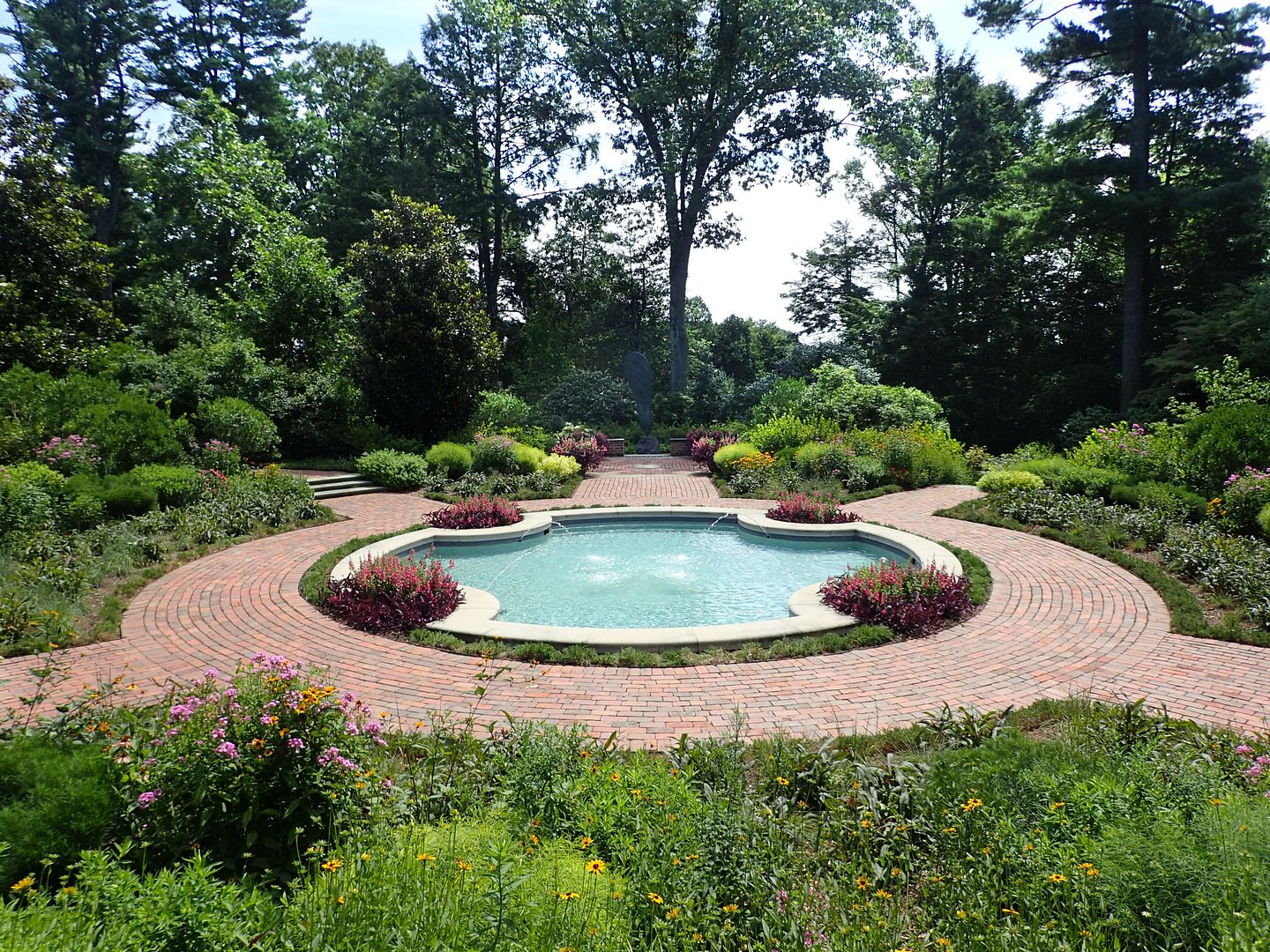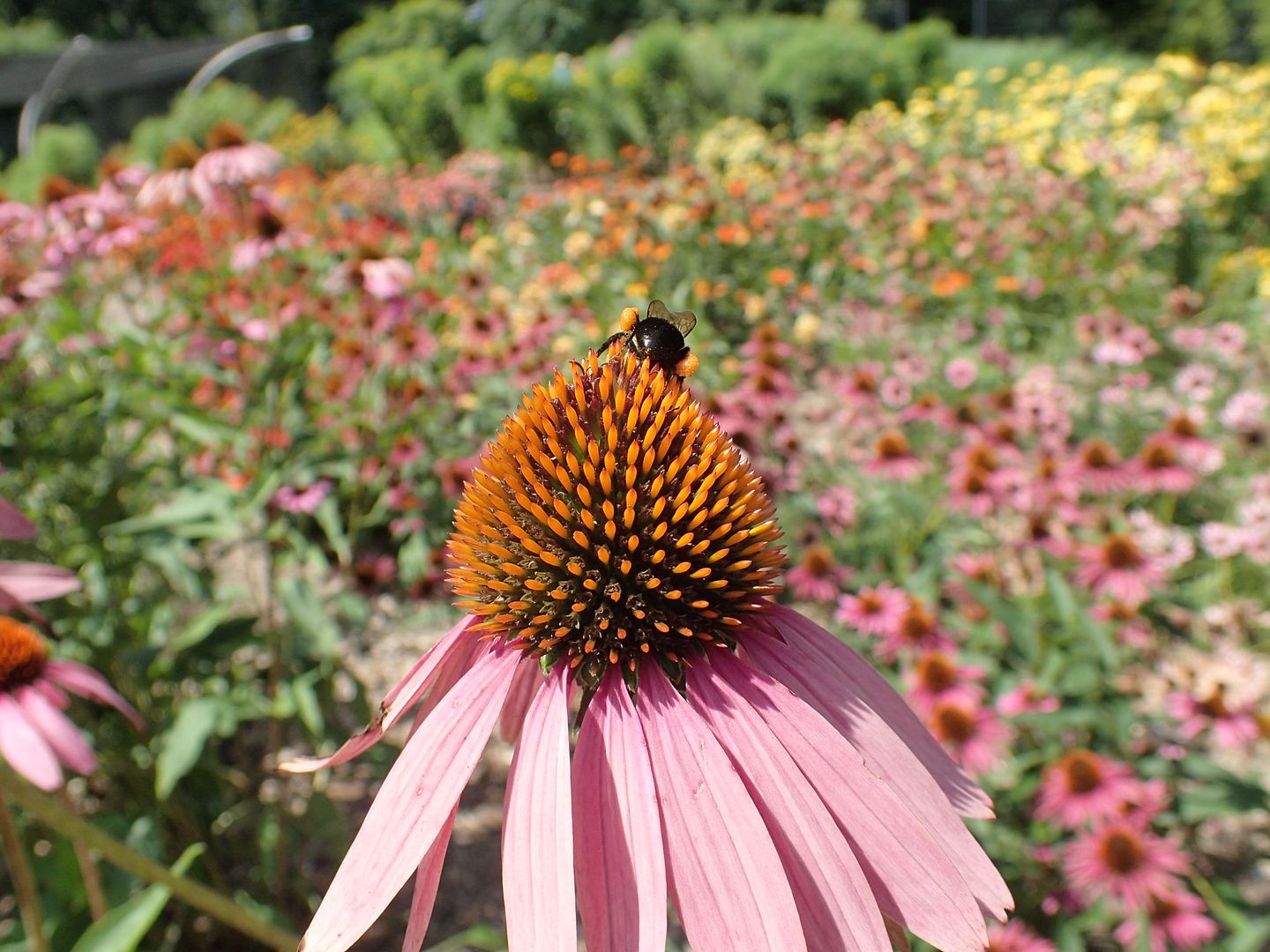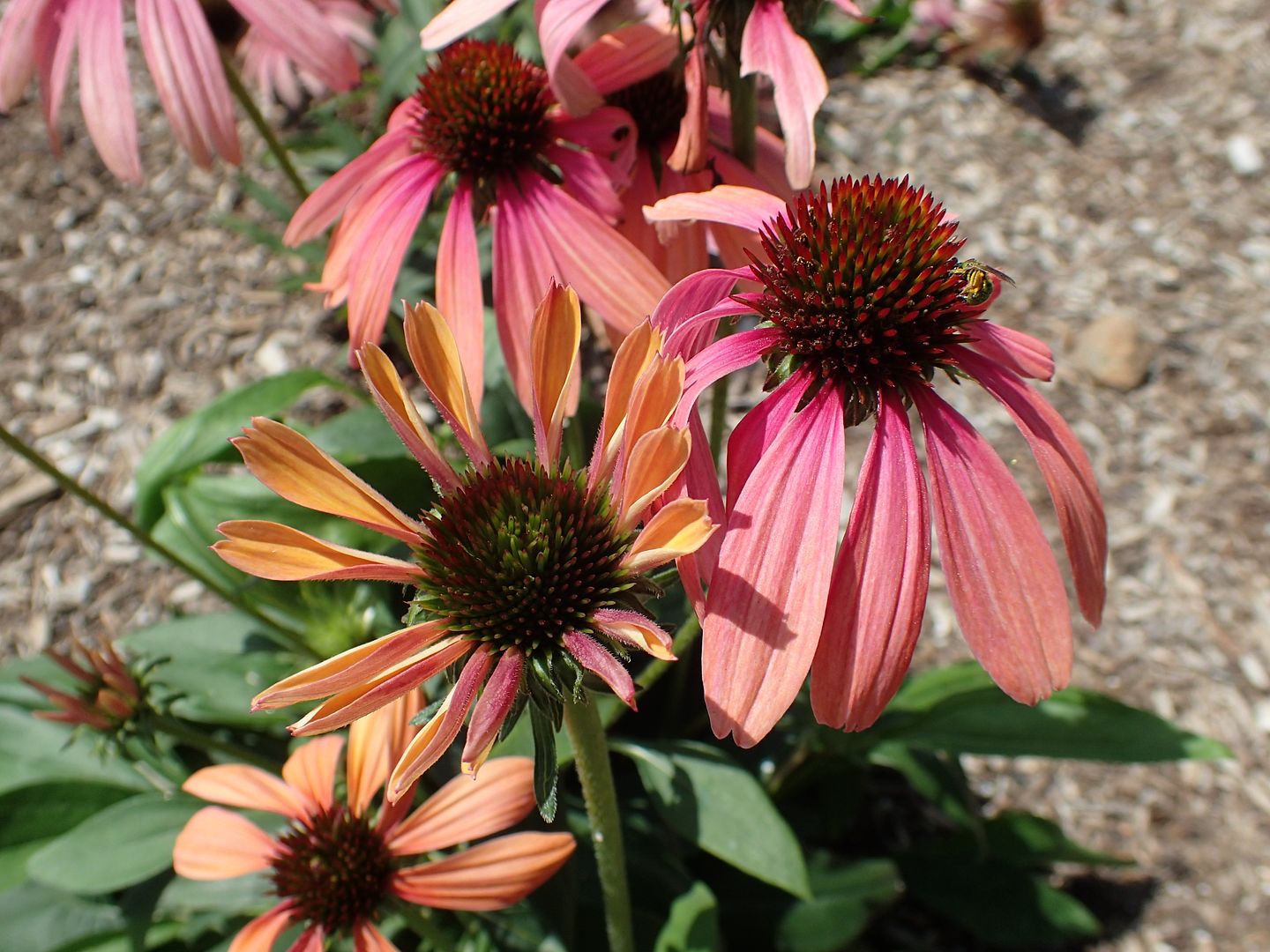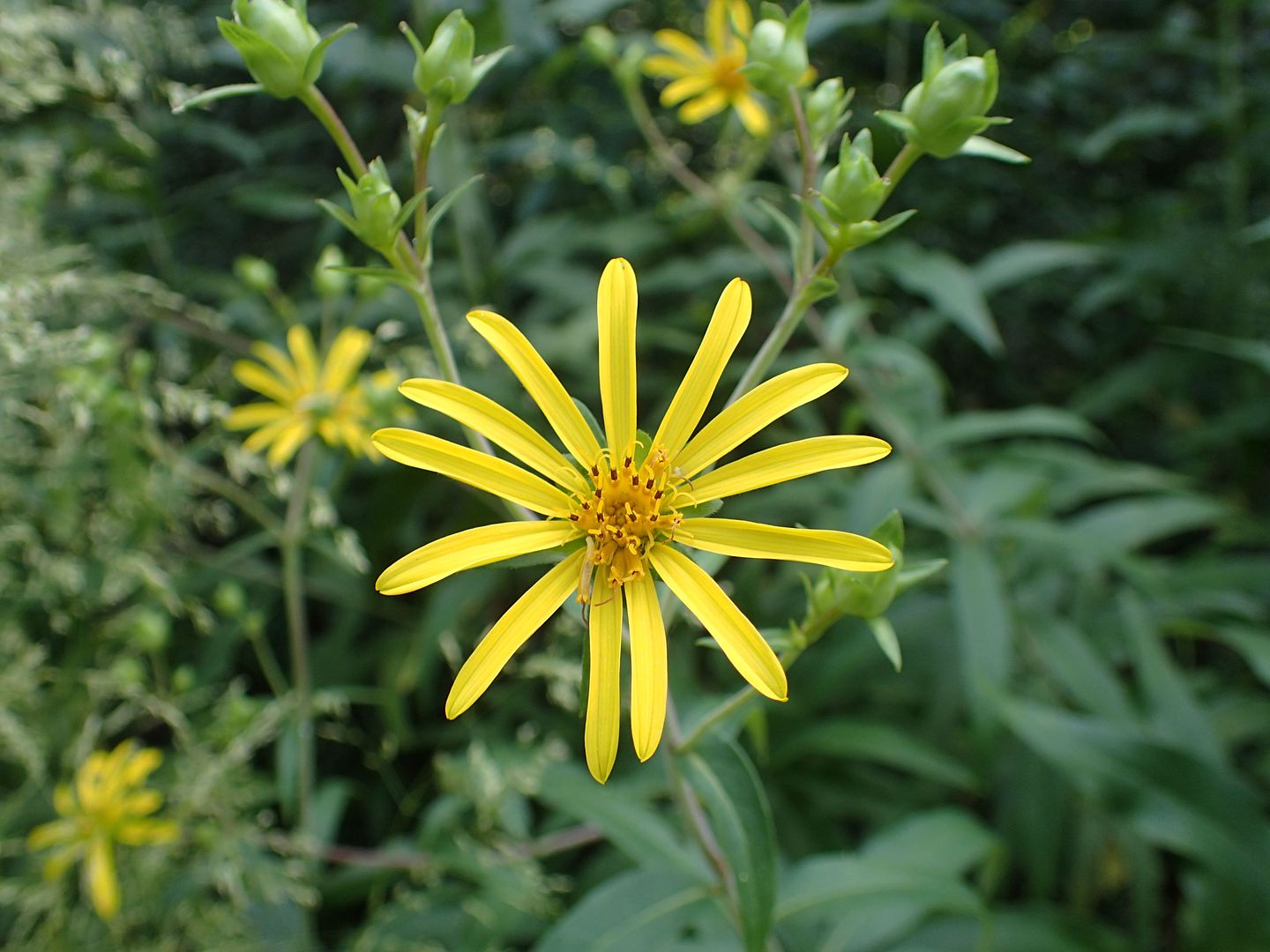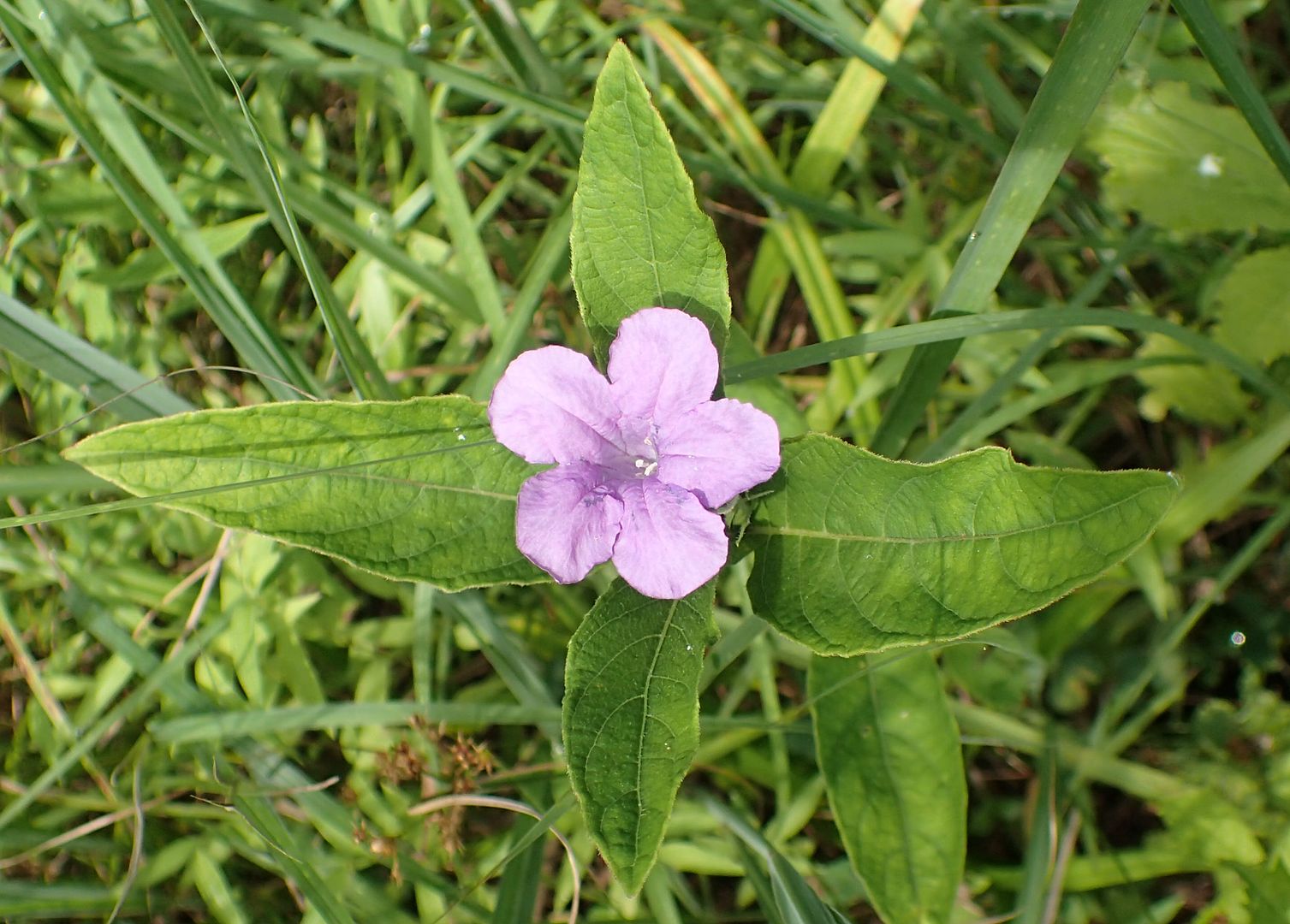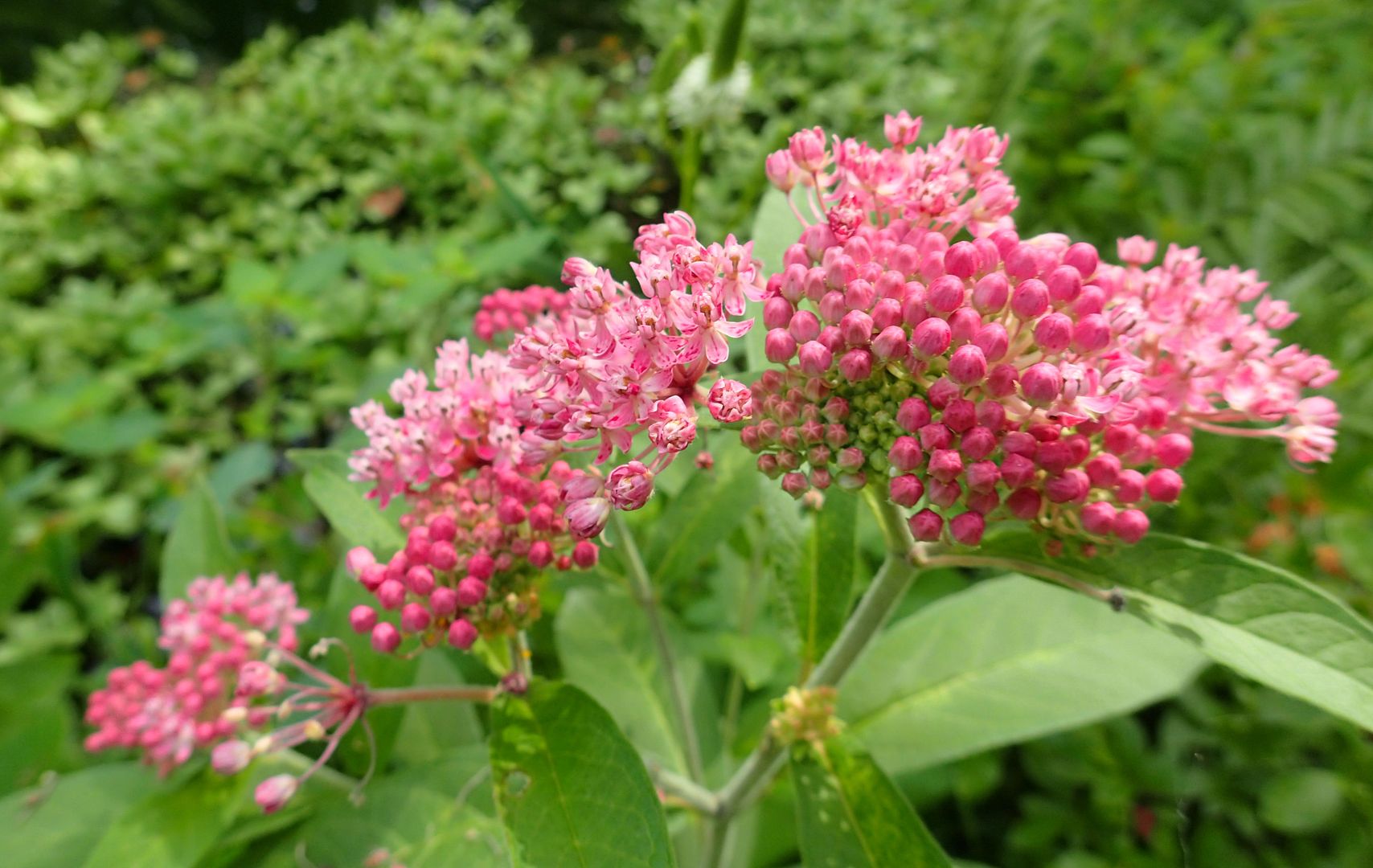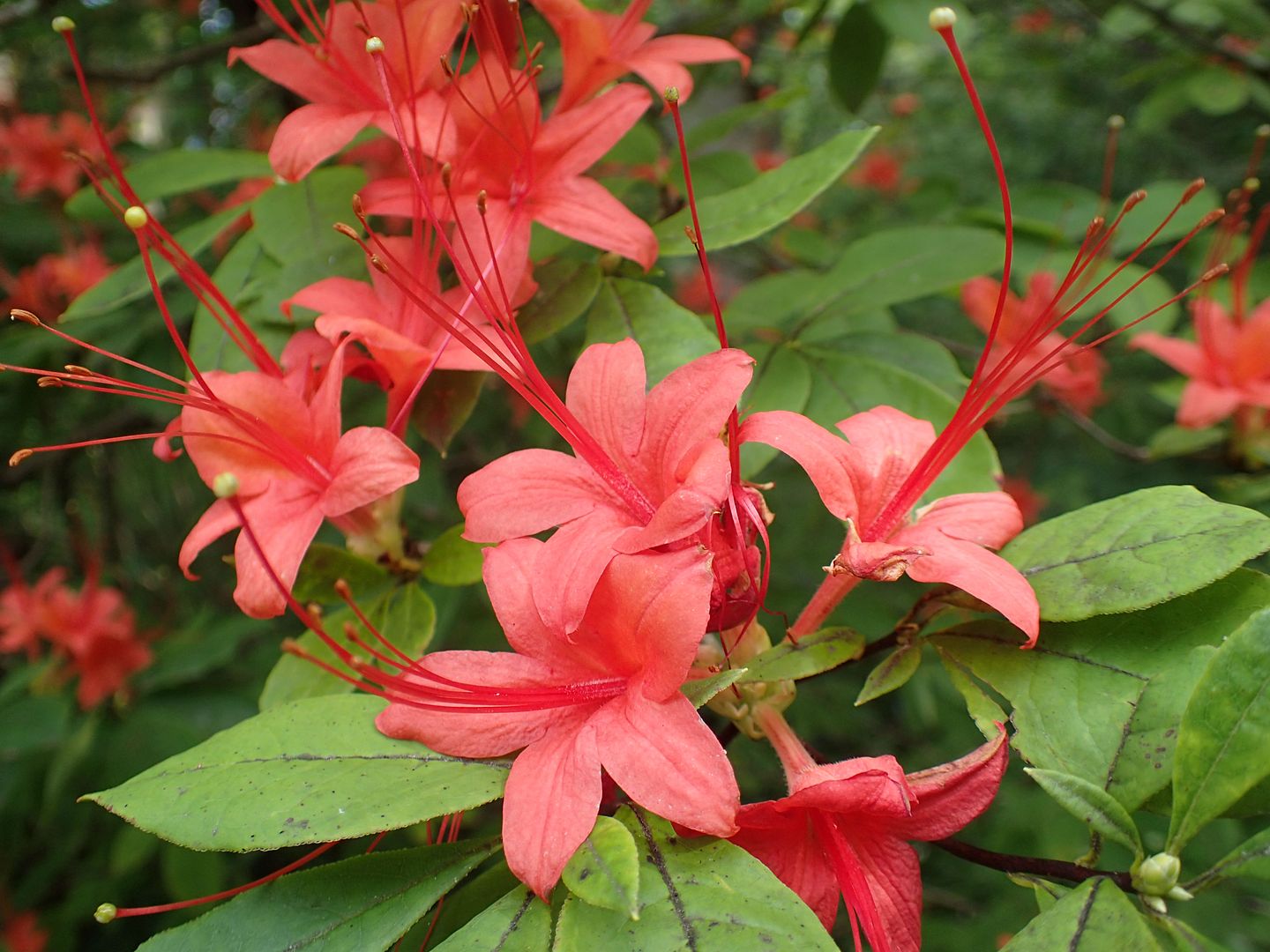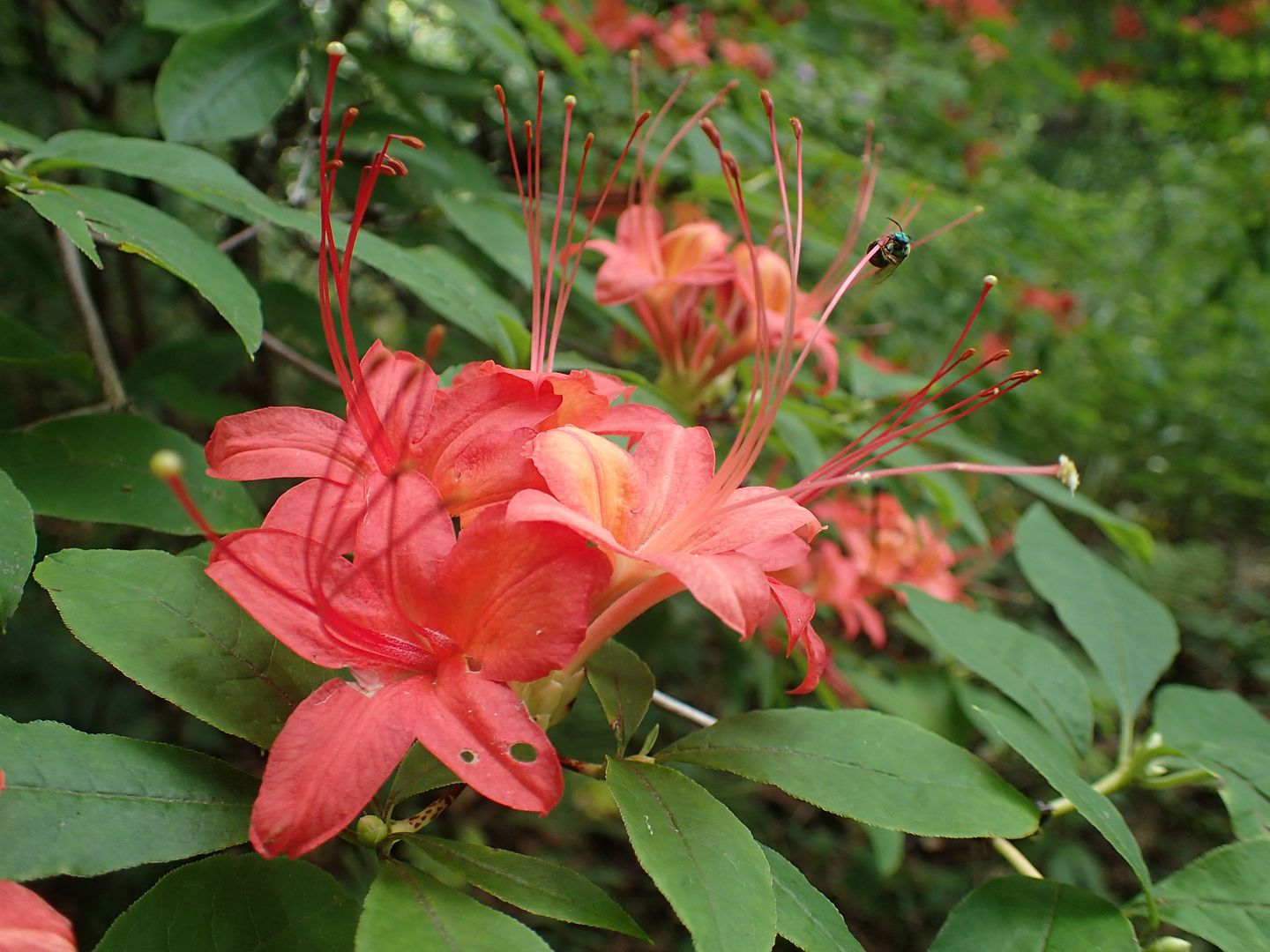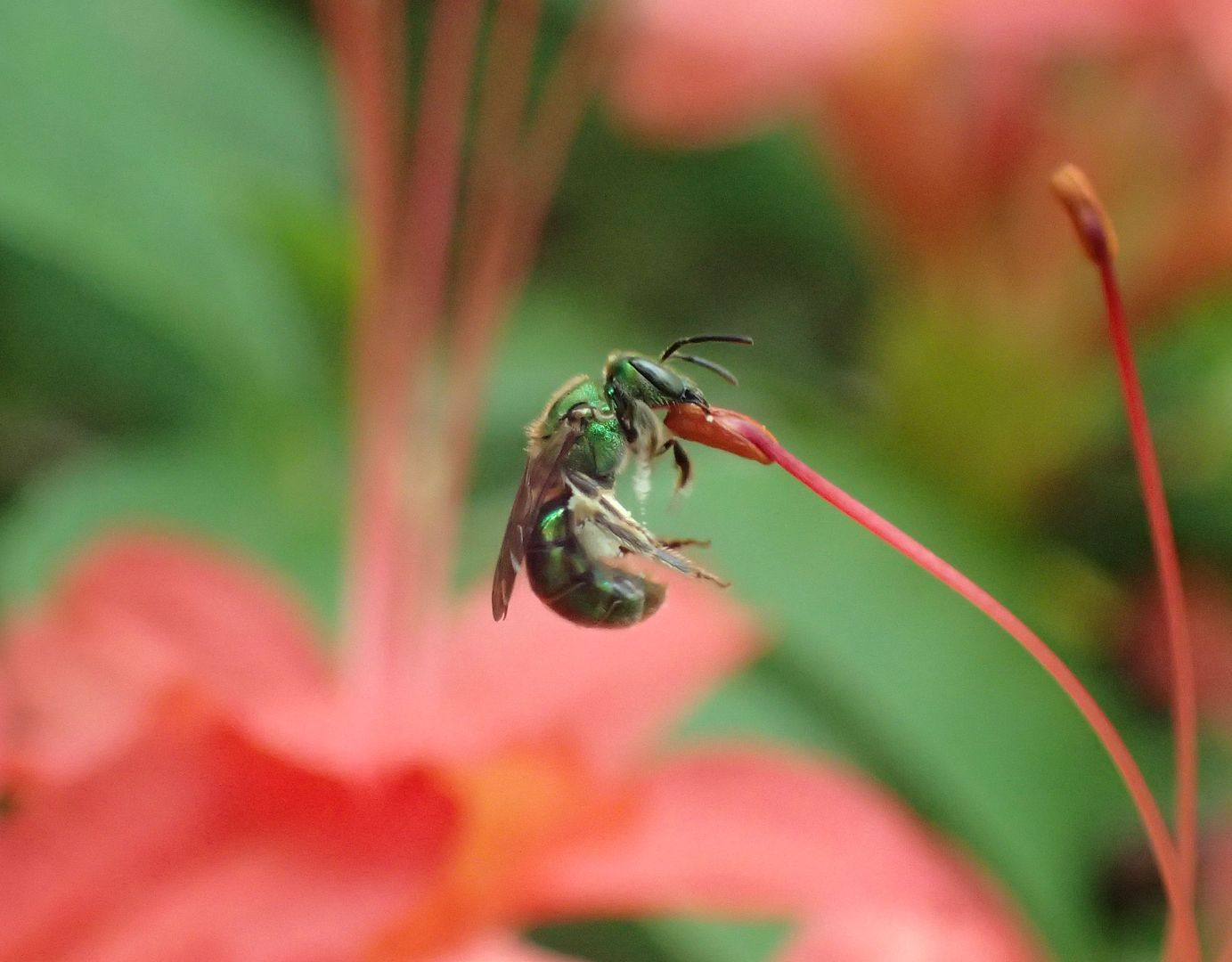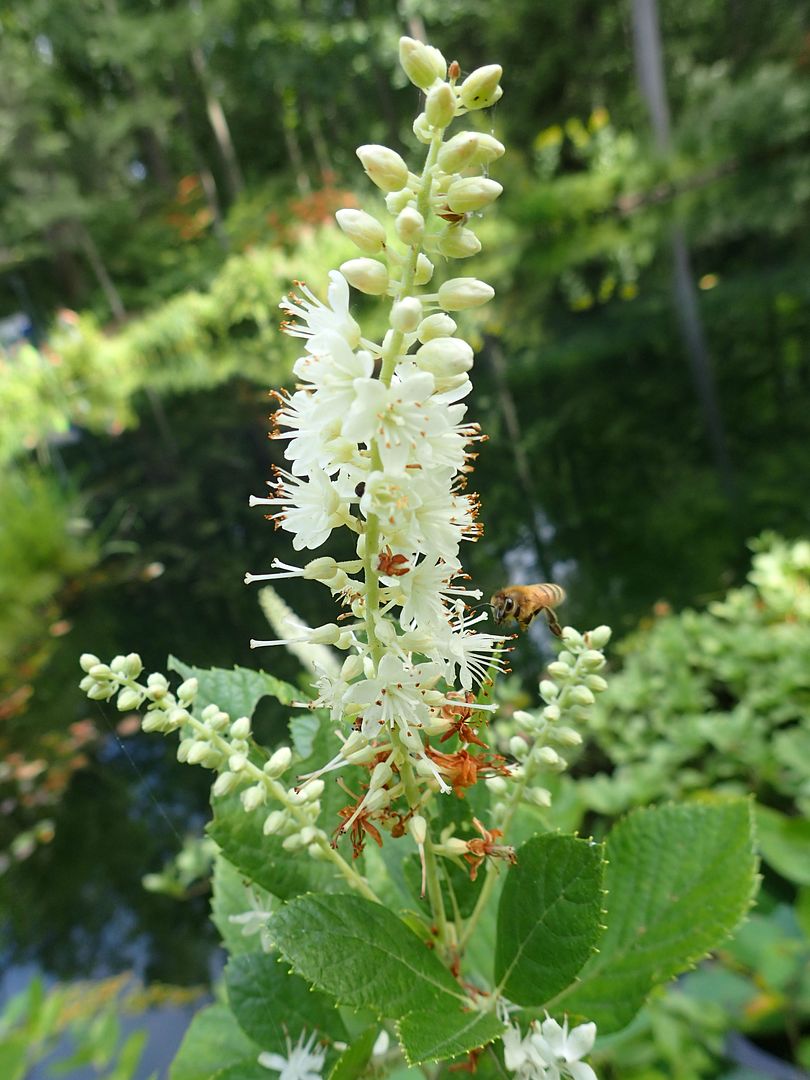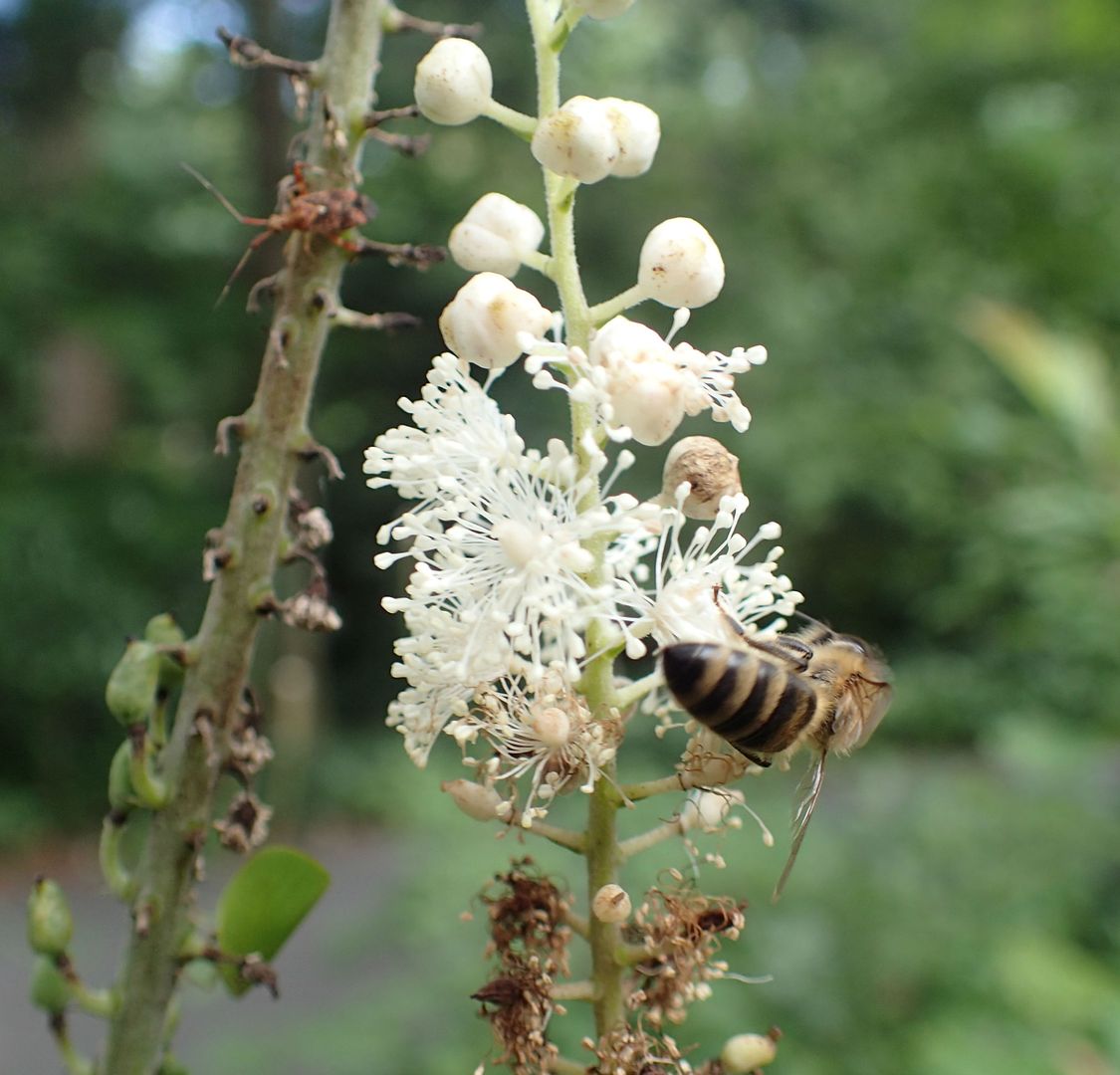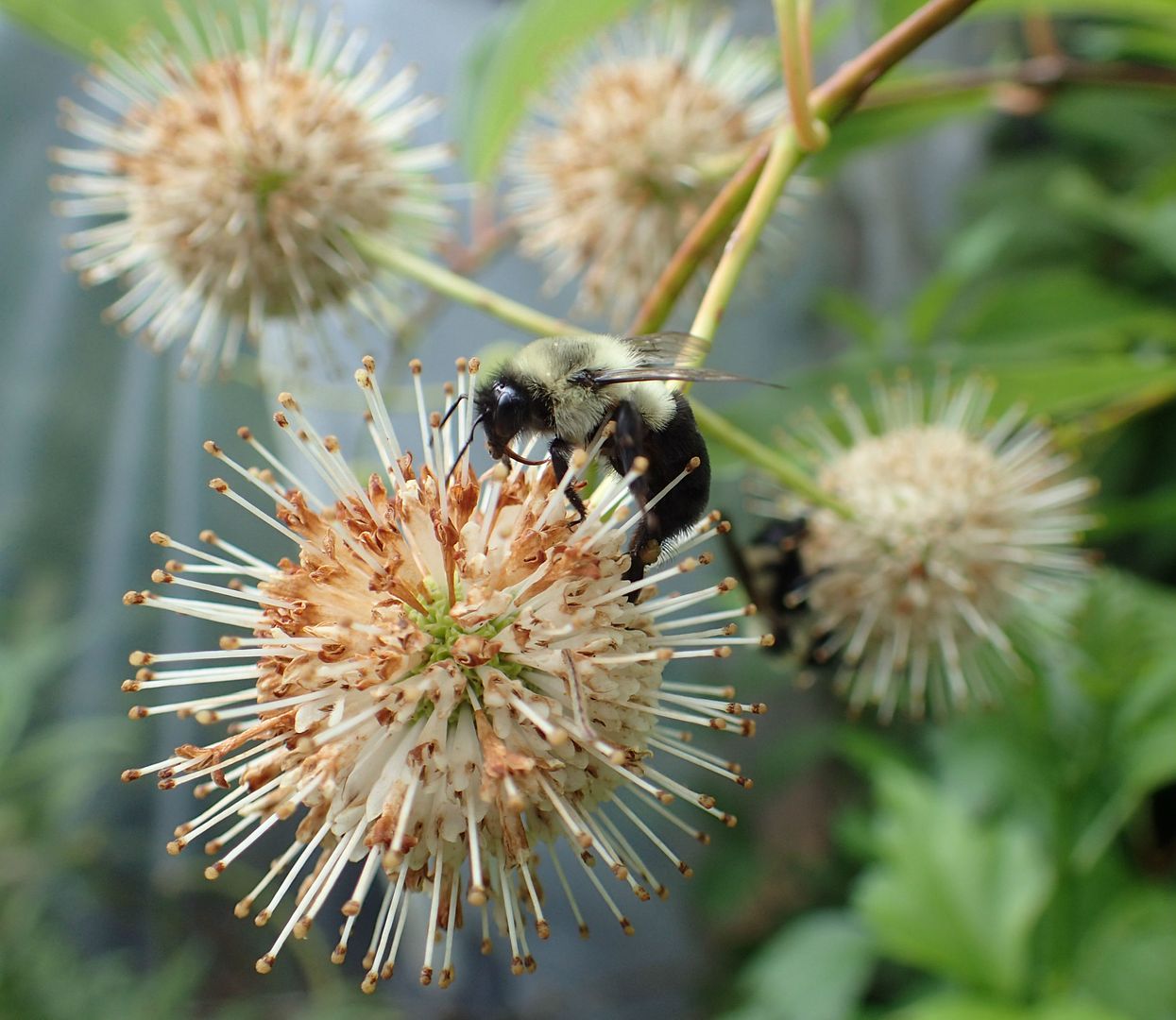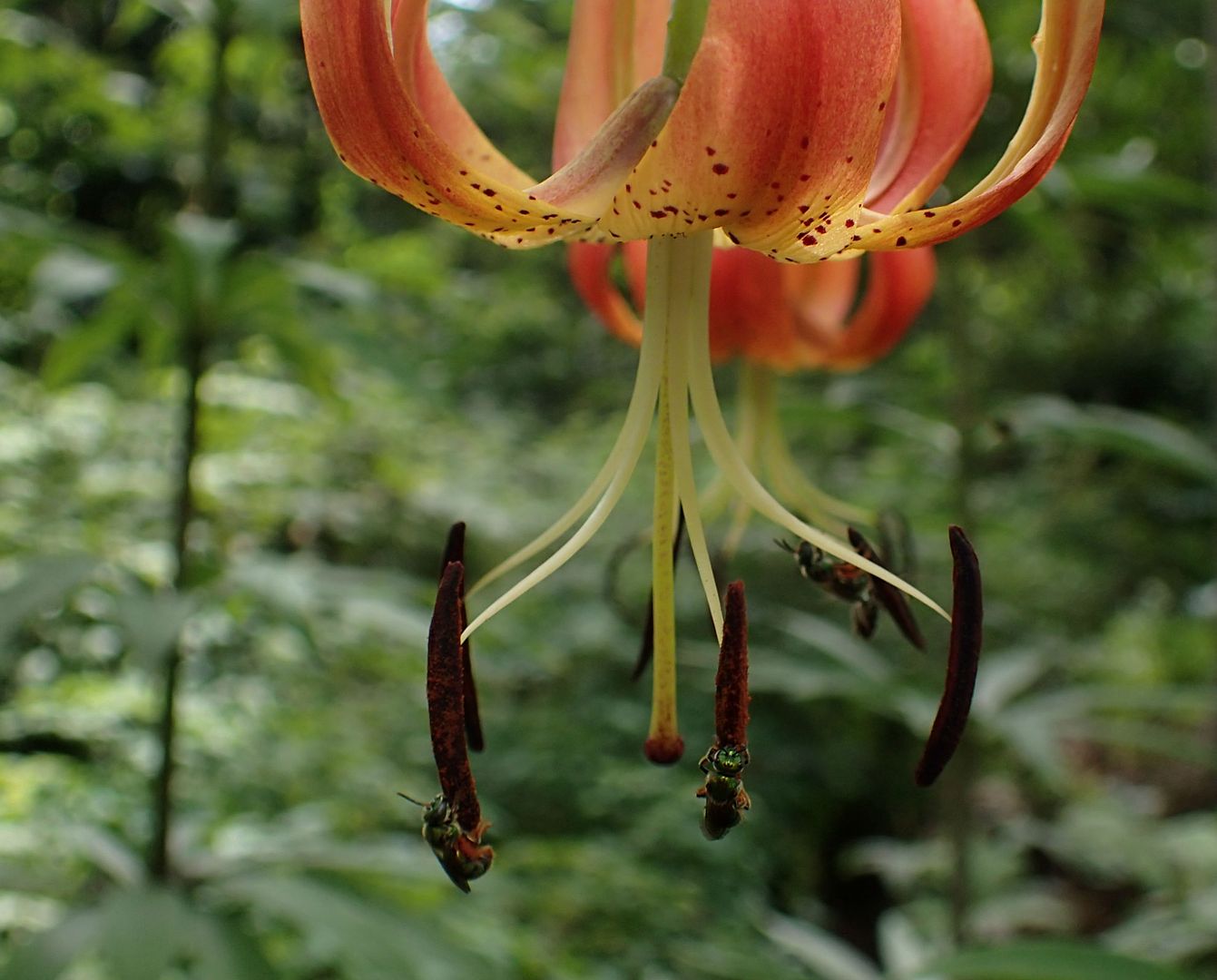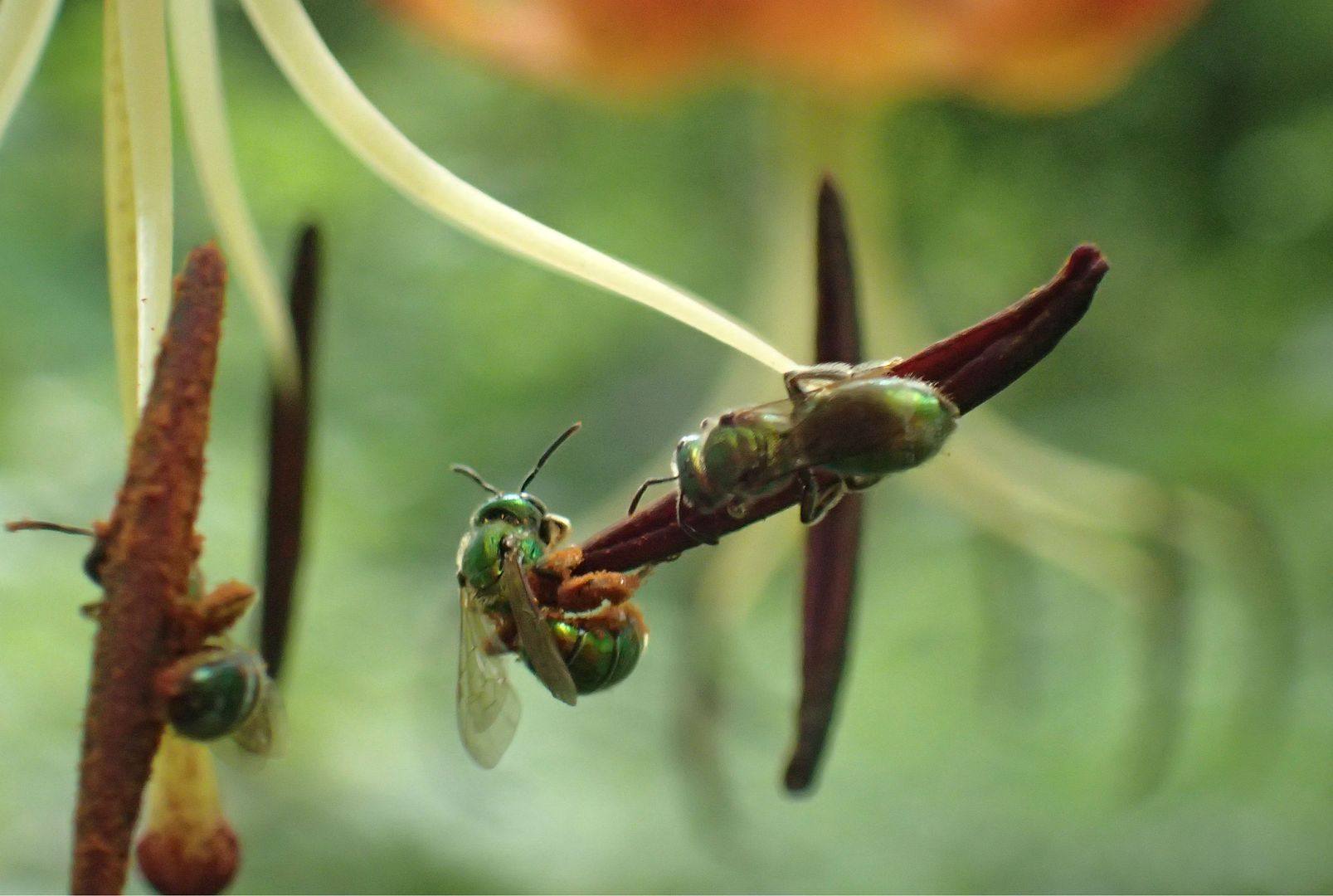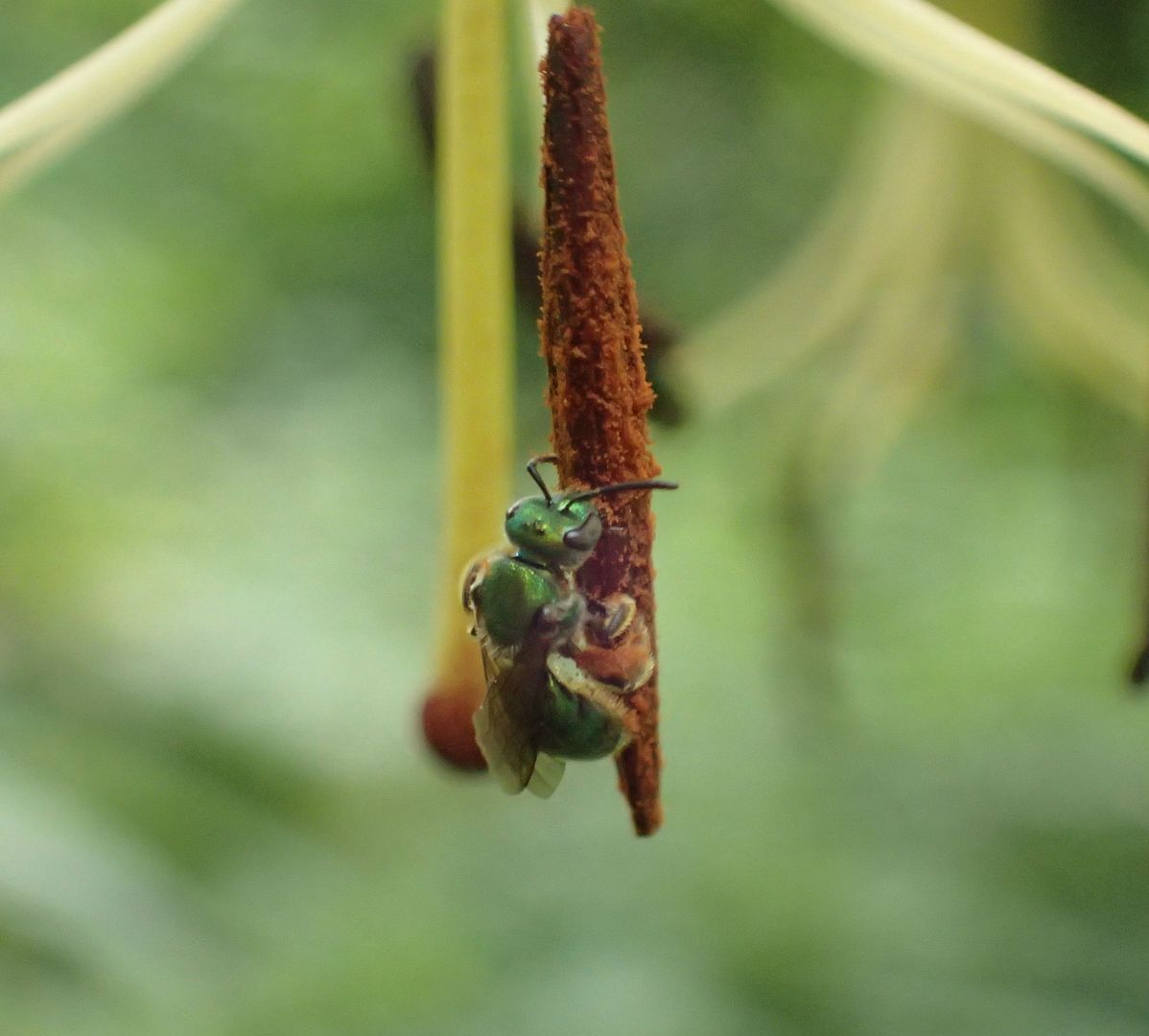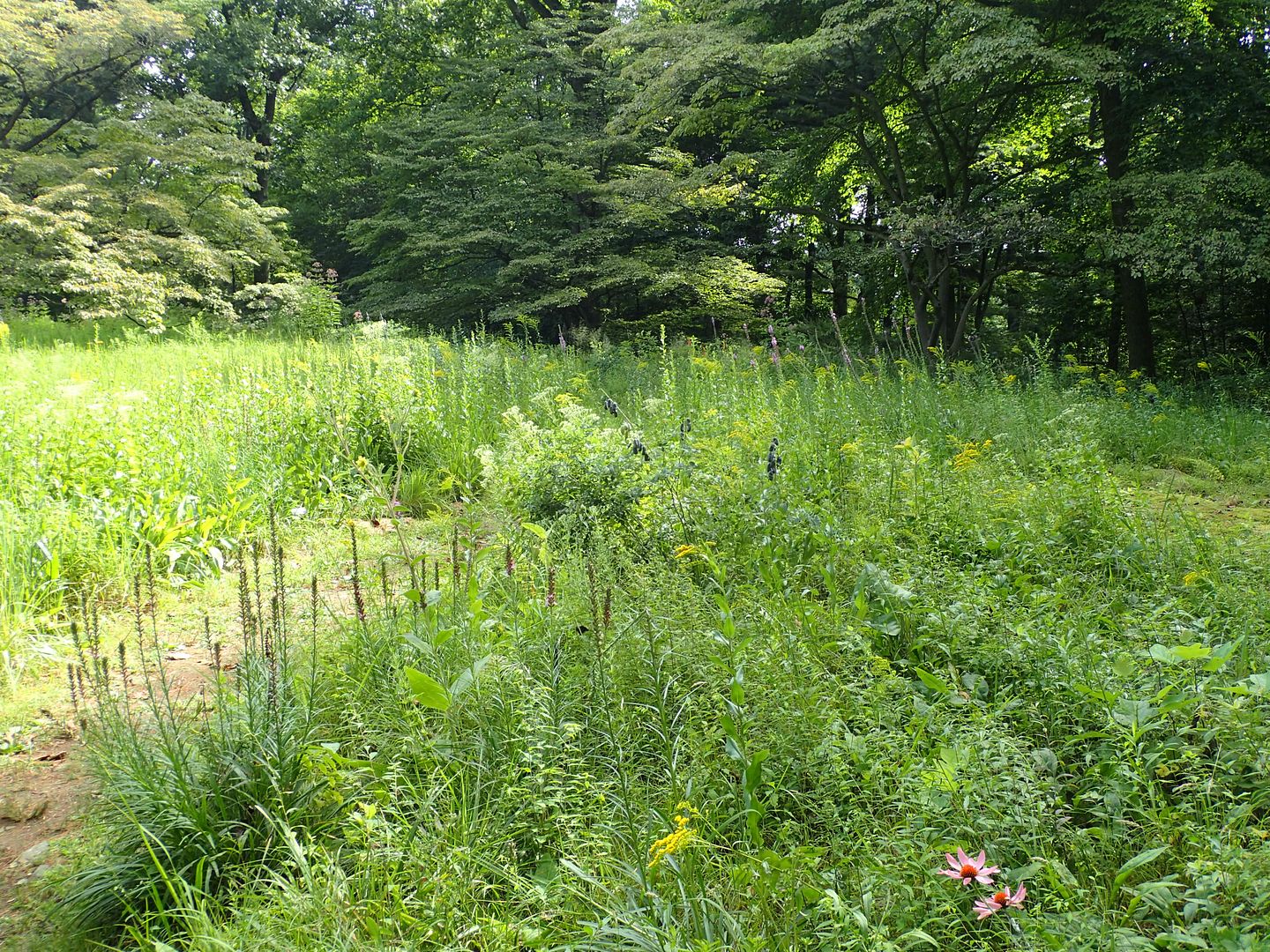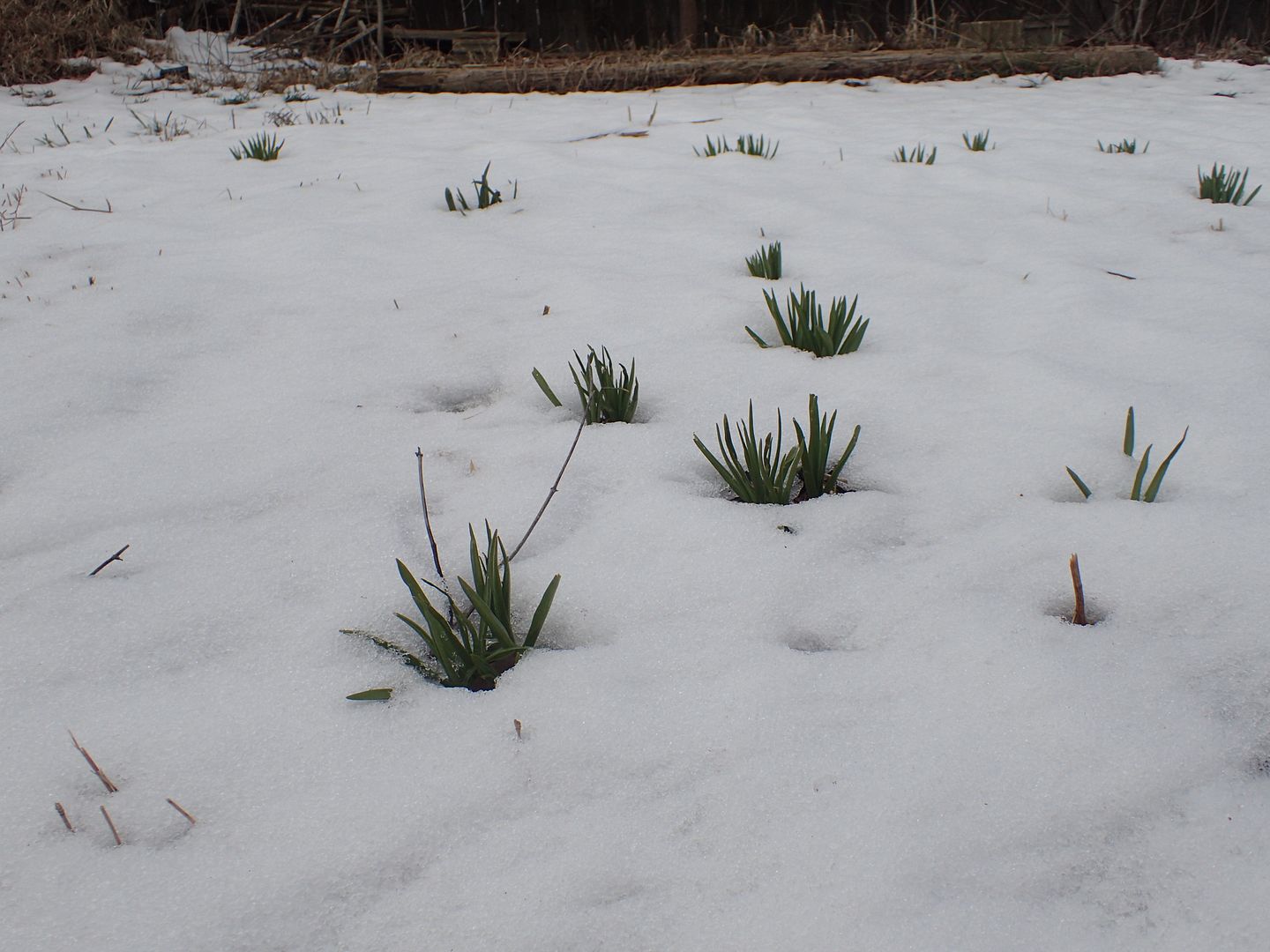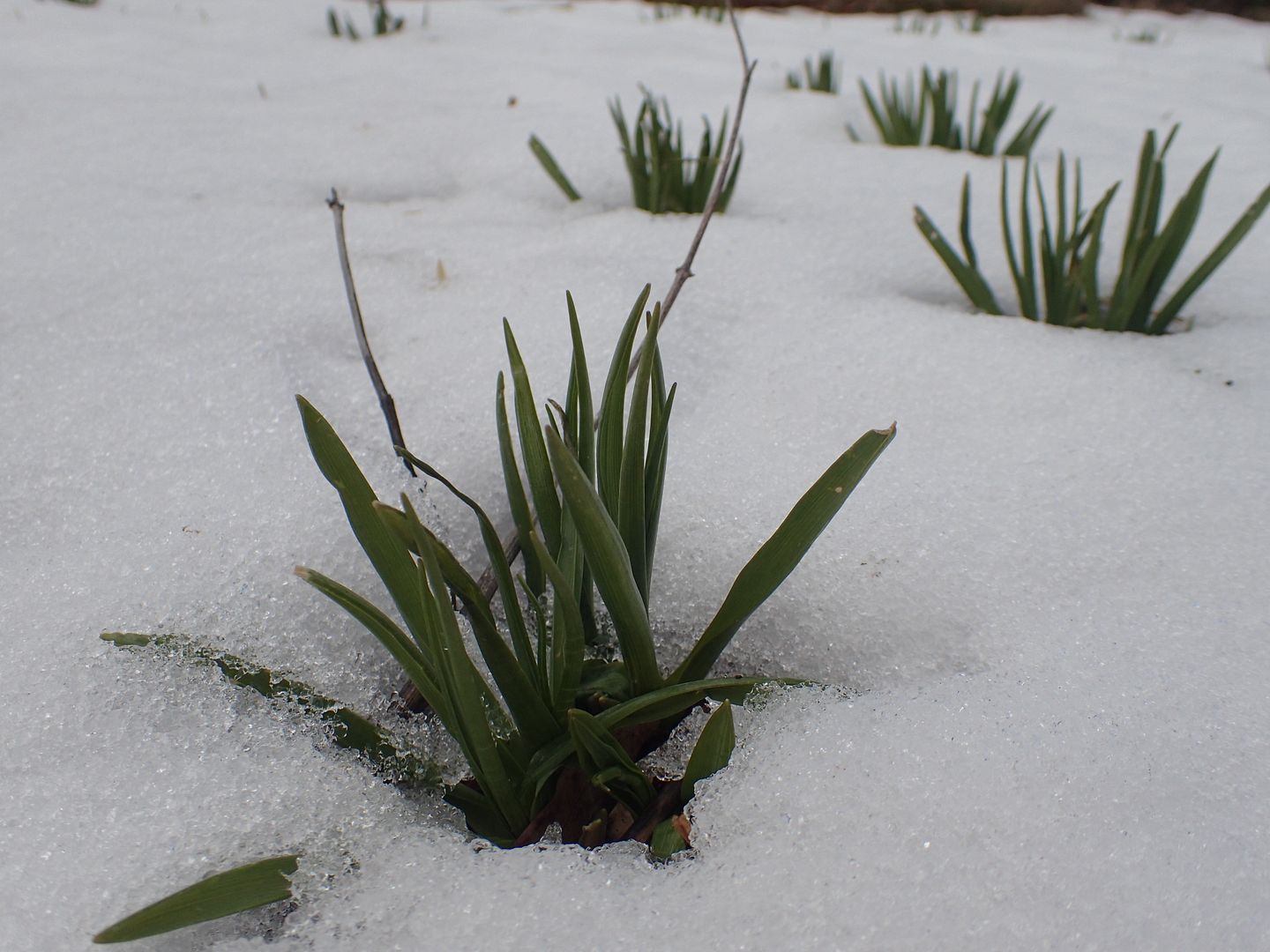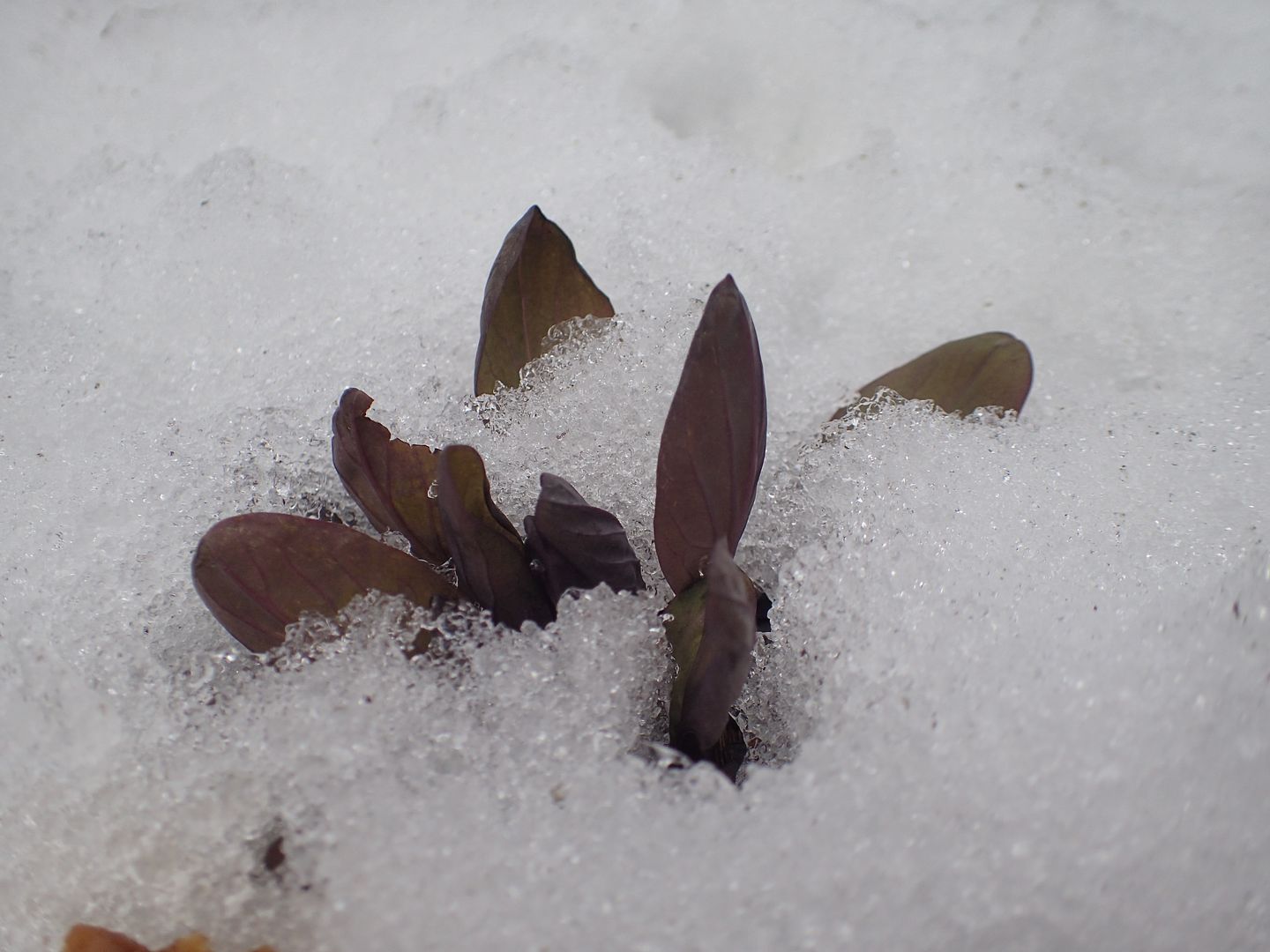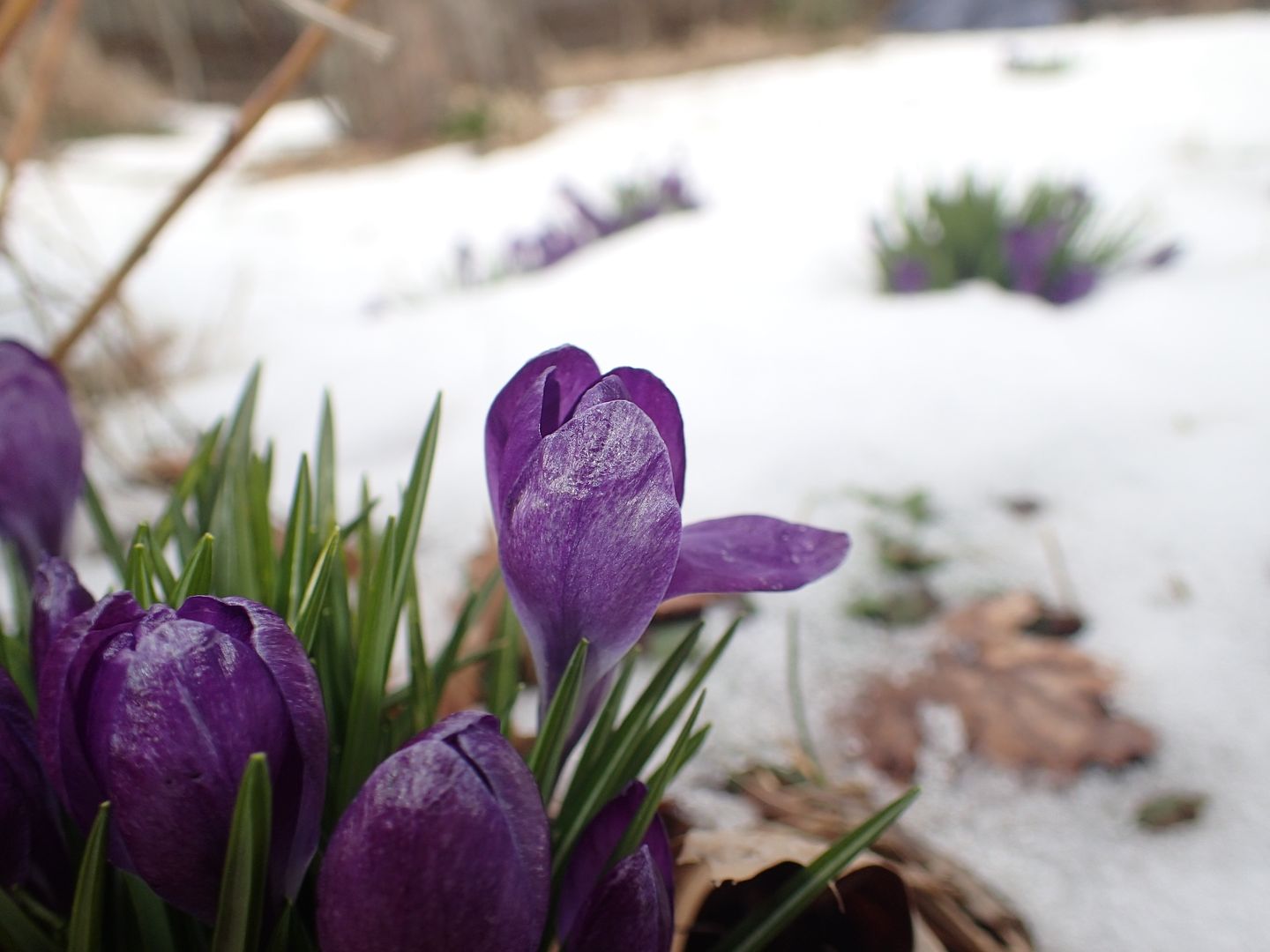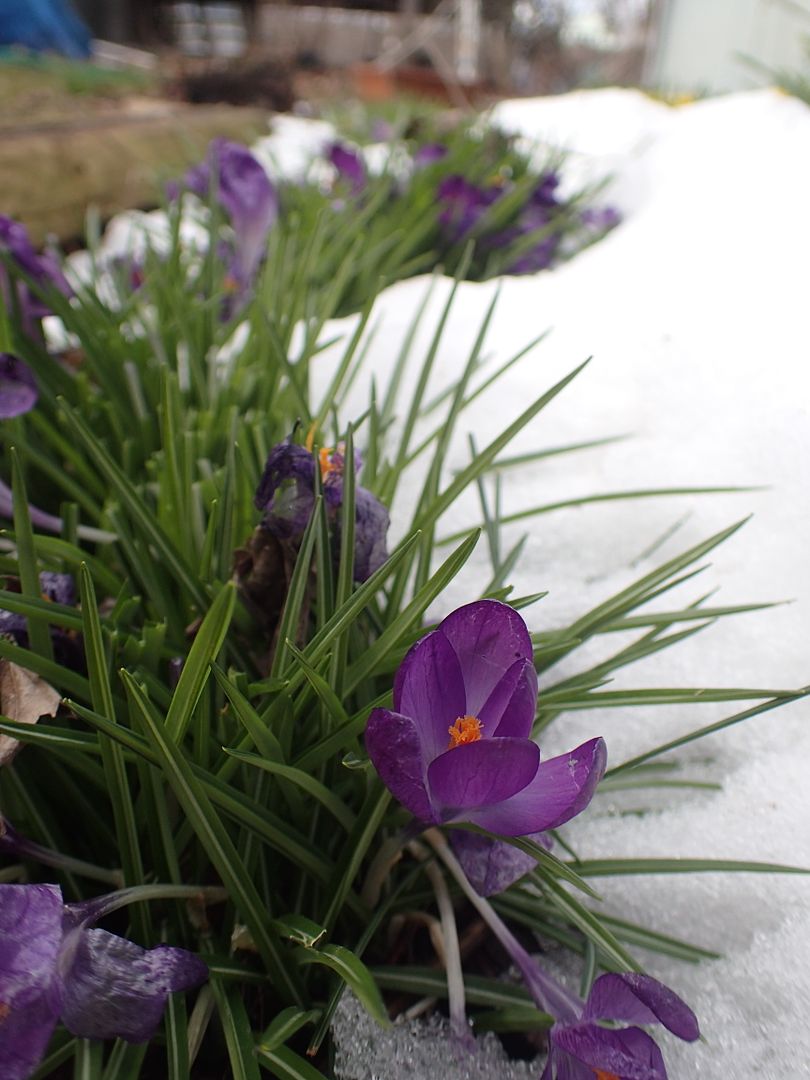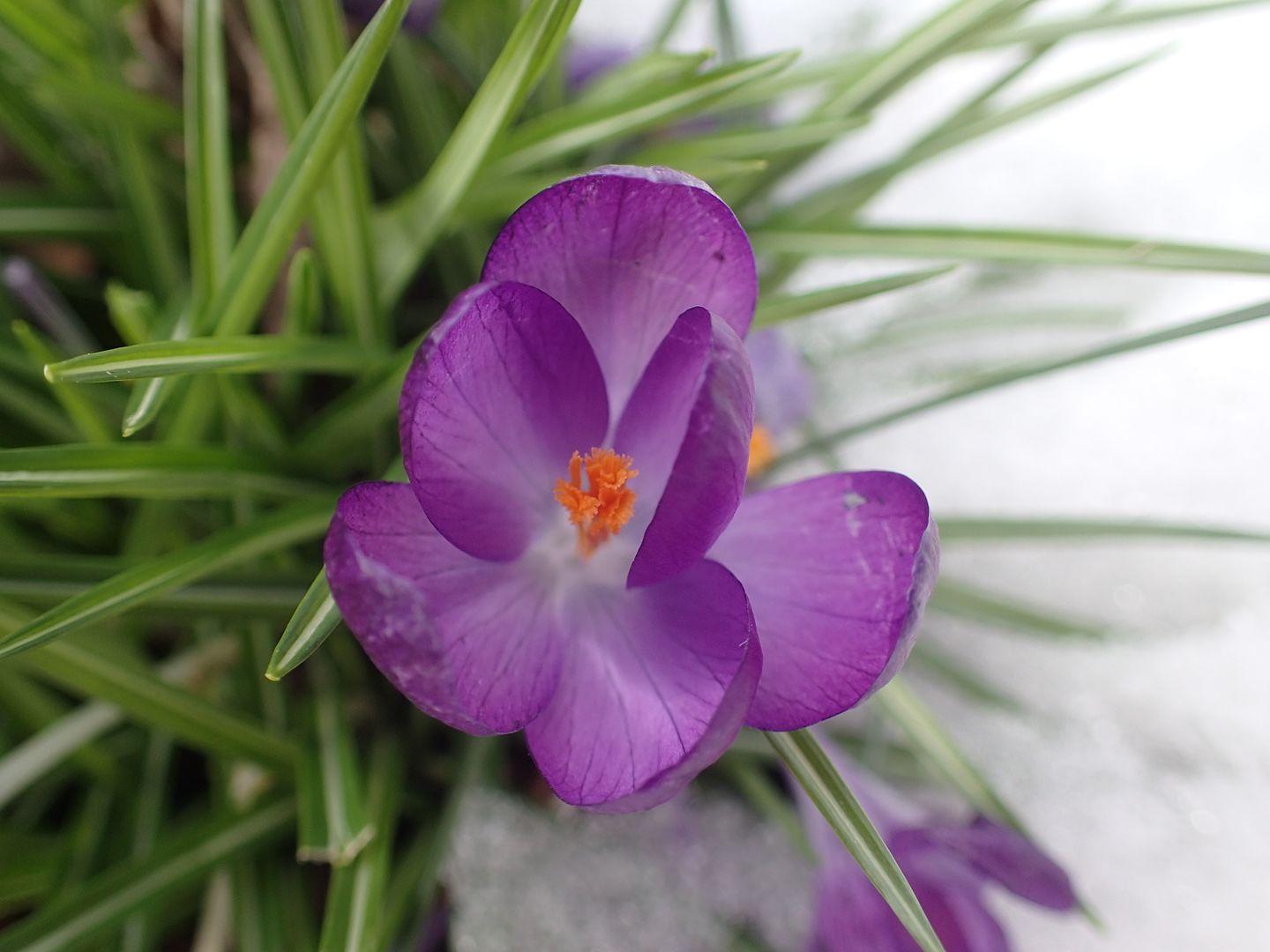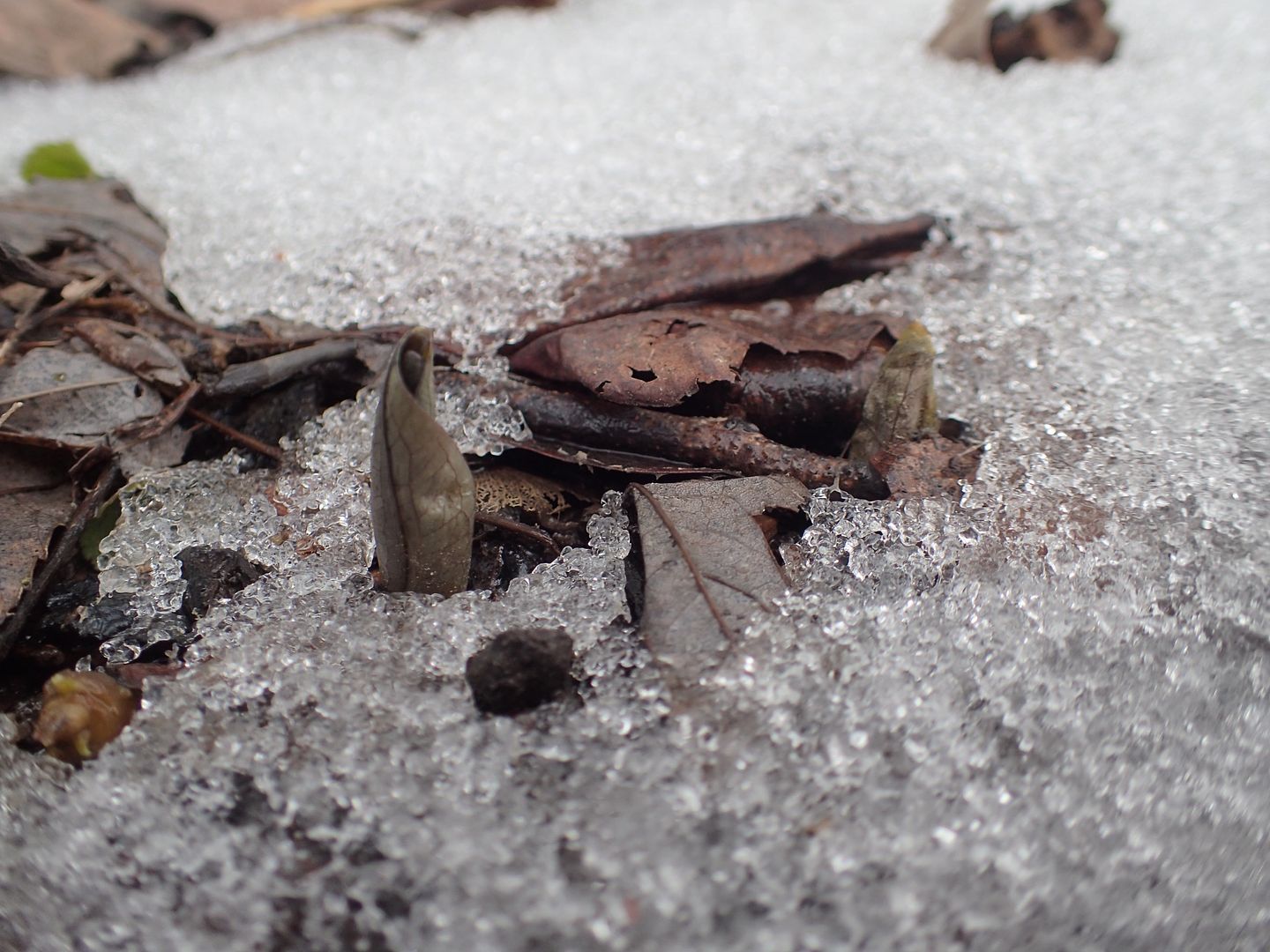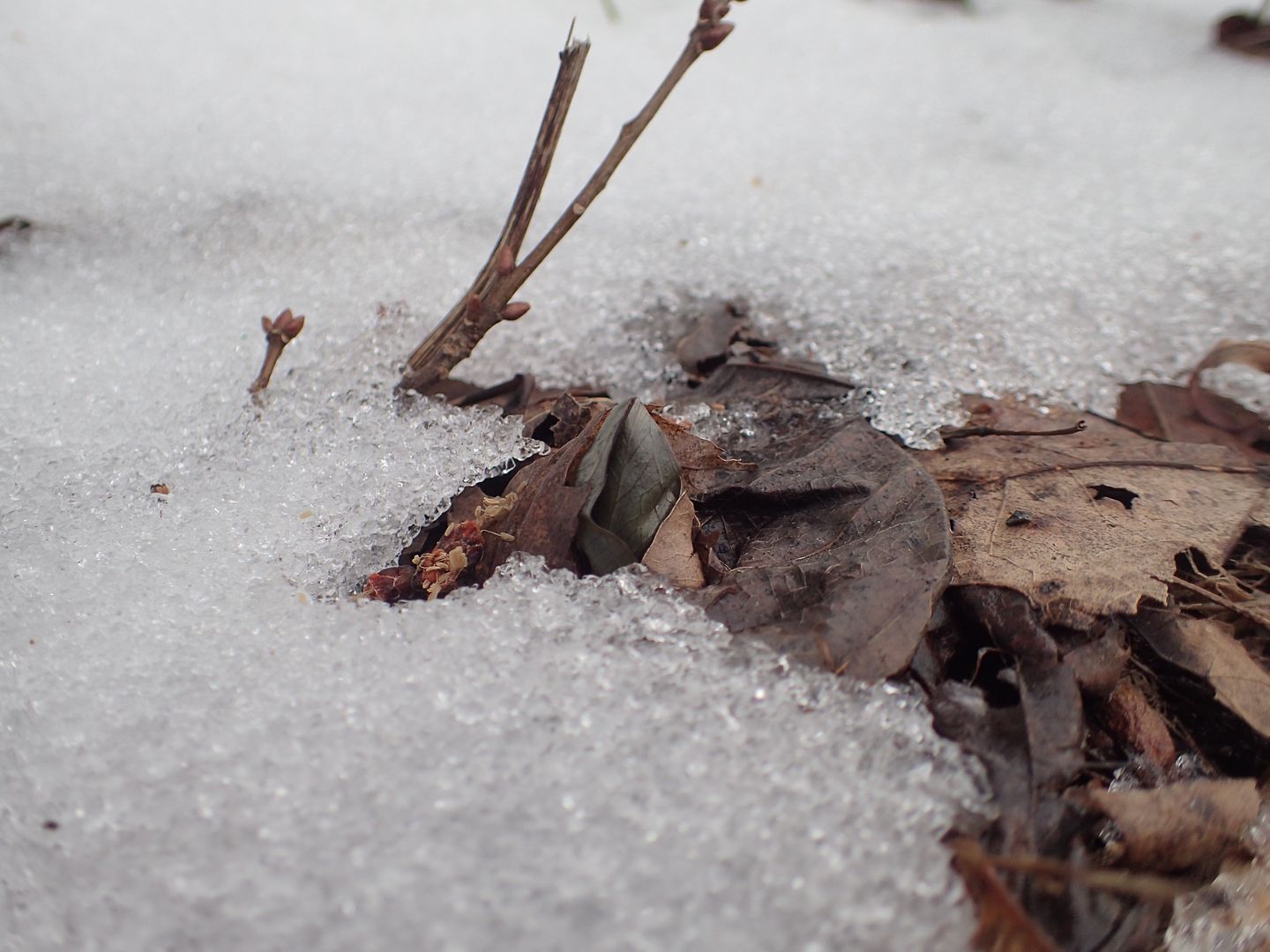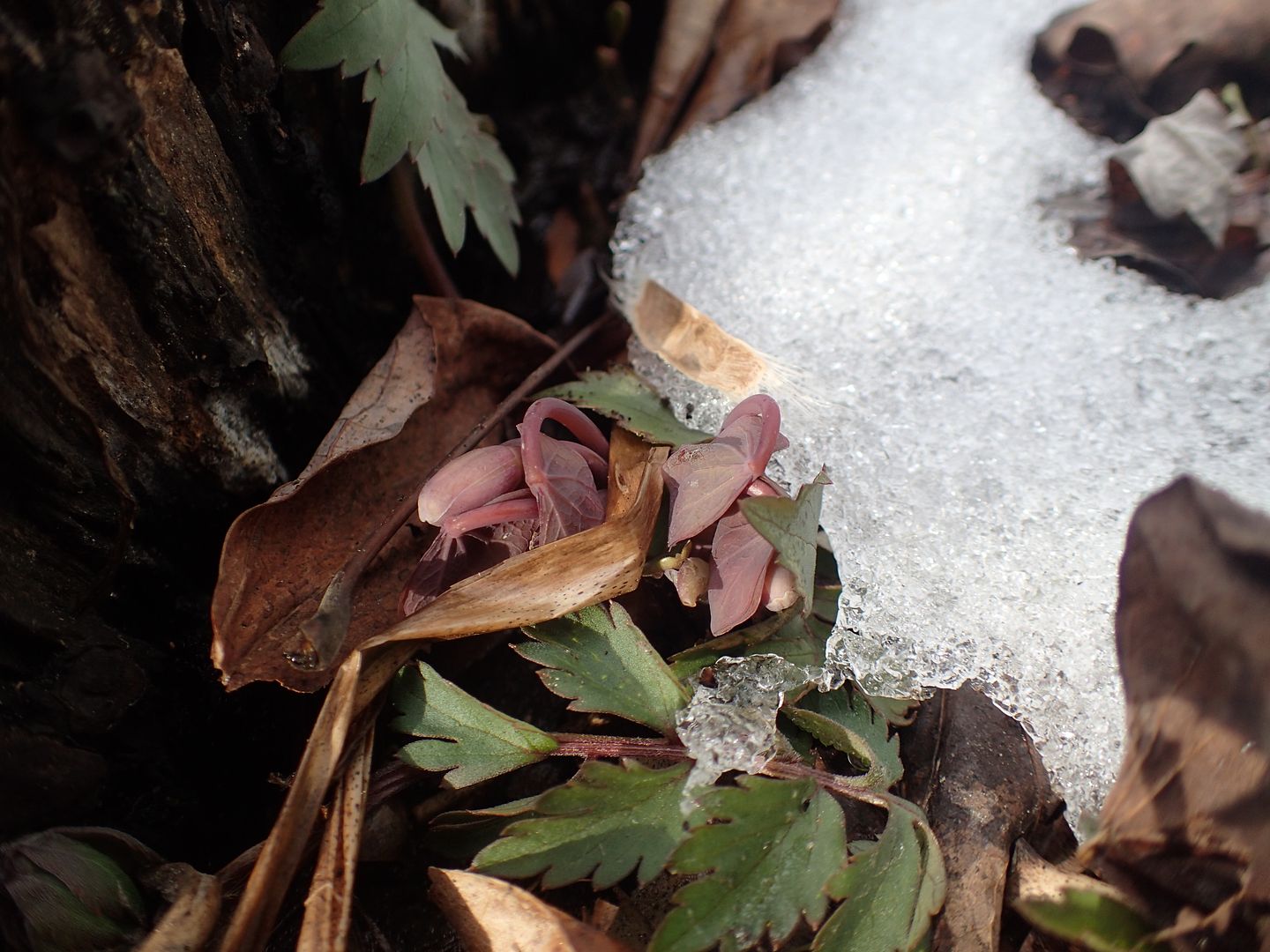Saturday, October 20, 2018
Monday, September 3, 2018
Raised some Monarchs
I'm finally getting a bumper crop of Monarchs this year. Despite growing several species of milkweed they don't always seem to find my garden every year. When I speak with friends out in Missouri and Illinois they're surprised that I don't really see Monarchs here in New Jersey until August. On some years if I drive out and about I do see the occasional Monarch in June but usually not in my county. It's as if the females don't want to waste their time with anything less than a huge field of common milkweed.
Geographically speaking I also feel they don't fly through my area until they're migrating south again. I live in Camden County, New Jersey which is on the Delaware River side of the state, but we're somewhat inland. I suspect as they're flying north they're reluctant to cross the river and on the occasion that they do, they're more inclined to visit open fields as opposed to suburban gardens.
As the summer presses on the populations that were established extend outward as patches of milkweed are devoured. Then heading as they all start heading south a wave of Monarchs in the New England area all follow the coast line. Cape May, NJ. is a fantastic spot to see them passing through. A few years back I was there and saw they'd planted a huge stand of Sea Side Goldenrod, Solidago sempervirens, which was in spectacular bloom when I visited but is likely now all died out.
Sea Side Goldenrod is a fantastic plant that can take a beating. It's able to grow in 100% sand at the beach! I don't think it survives the tide coming in but it can take high levels of salt. Thing is, it also grows a lot better in clay soil and garden soil too. And I find it's that way with a lot of plants that are supposedly tough to kill, hardy, drought tolerant.
One key plant I feel that helps draw in the Monarchs is Meadow Liatris, Liatris ligulistylus. Tragically this is a biannual that doesn't reseed well in my garden. I have several of these though in a pot that came back from last year so maybe that's the key. They were part of a flat of 50 plants and all the ones I placed into the ground died!
This is easily their favorite nectar plant until it finally stops blooming. There's always at least one or two out there fighting over it.
Joe Pye Weed is another native though certainly not high on the list. At last not in my garden. The plants at the Mt. Cuba Center got more attention than mine but they don't have any Meadow Liatris around.
Buttonbush, Cephalanthus occidentalis, might as well be marketed as White Butterfly Bush. For years I've thought this was one of the best nectarine plants North America had to offer. There really isn't a kind of bee or butterfly I haven't seen on it. And for years I thought what a shame it only blooms for a week or two... but this year something neat happened with one of my plants. Mysteriously it leafed out in an odd pattern with the lower branches becoming fully green before the ones higher up and then also produced newer branches up at the top. The result was that these locations all produced flower buds a week apart from one another and then bloomed first on the old growth and worked it way up to the new. So this year I got about three weeks of flowering out of it. Apparently older shrubs do this, which makes me glad I planted 2 more around the house.
Besides the Liatris I'd say the Mexican Sunflowers is the Monarch's second favorite nectar plant. And once the Liatris finished flowering they were all over these in my yard, favoring them over the Joe Pye Weed, Buttonbush, Phlox and Ironweed. They still visited all of these plants but I could always guarantee to find a Monarch on the Mexican Sunflowers whereas sometimes I'd walk my garden and rarely see them on any of the others.
Common Milkweed was the host plant of choice. I grow Swamp Milkweed, Butterfly Weed, Purple Milkweed, and Sullivan's Milkweed too and haven't found a Monarch on any of them.
Actually I worry about the Butterfly Weed I bought from Home Depot. I found eggs on the leaves but not one caterpillar!!! When I bring in sprigs of this plant to feed to caterpillars I have in small plastic cages they refuse to eat it. I don't know if it's just because it's a different kind of milkweed than they're used to eating or because they're spraying them with a systemic pesticide and the caterpillars are somehow picking up on that. Either way I'd love to know just to put my mind at ease, cause it's an awful shame if Home Depot was selling whole racks of tables full of 3 gallon sized pots of beautiful orange Butterfly Weed that was coated in poison.
Any who, all the eggs and small caterpillars I've been finding on Common Milkweed I've been bring inside and letting them develop that way. The plants outside have holes in the leaves indicating that young caterpillars had tried to eat the leaves but were nowhere to be found. Naturally as ant friendly as my yard is the plants are crawling with them which are likely responsible for these missing caterpillars.
~9 to 14 days later a batch of Monarchs are born. Everywhere online says 10 to 14 days, but I think this is 10 days starting from when they hang upside down and make a J shape as seen 3 photos up.
And from here I let them go.
As a bit of controversy I posted these images on facebook and a friend on there commented. "Wouldn’t think you’d be into this." Which I mistook to mean he thought it was odd a grown man would be into raising butterflies. I replied that I was a native plant gardener so why wouldn't I be into this? And then he made his point clear.
Basically he thought it was unnatural of me to bring the caterpillars inside and nurture them into adulthood. In his view I should have left them outside on the plants to be eaten by birds, ants, and spiders so that nature can take its course. Which I admit he has a point but he also implied that because I had helped a few caterpillars along I was actually doing a disservice to them. Somehow in his view because I had increased the population of the Monarch Butterfly by 5 I had in fact decreased it....
This argument bewildered me as it's the first time I've ever heard it. In fact the internet is filled with hundreds of How To Raise Monarch Butterfly websites. The only thing close to what this person is saying on any of them is to keep an eye out for certain diseases, though all the ones that I know of for Monarch Butterflies either terminate them in development or leave their wings so deformed that euthanizing them is really the only option.
I could make further arguments toward this person as it's sort of similar to the anti-vaccination movement that's bringing back diseases long thought rare and uncommon. Shouldn't we let nature take it's course?
I didn't make this exact argument to the person as it's the kind of thing that would have made me unfriend them. I did put it another way. Basically I asked shouldn't I have not gone out of my way to plant Milkweed in the first place? Shouldn't I have just let whatever weeds decide to show up there grow be thankful nature took its course.
Oddly enough this individual changed his line of thinking when it came to plants. He told me plants are different... and then he said something about meadows and gardens that didn't really make senses. This annoyed me because, plants are not different, they pollinate, and reproduce, and if one were to help the seeds along by putting them in the ground, watering and feeding them, how is that any different from me bringing in some milkweed leaves with eggs on them, putting them in containers and letting the resulting caterpillars develop into adulthood?
Has anyone else come across the Let Nature Be types out there?
UPDATE: Apparently there are people who raise 100+ Monarchs (and likely other butterflies) indoors all year.... I'm not doing that!
Geographically speaking I also feel they don't fly through my area until they're migrating south again. I live in Camden County, New Jersey which is on the Delaware River side of the state, but we're somewhat inland. I suspect as they're flying north they're reluctant to cross the river and on the occasion that they do, they're more inclined to visit open fields as opposed to suburban gardens.
As the summer presses on the populations that were established extend outward as patches of milkweed are devoured. Then heading as they all start heading south a wave of Monarchs in the New England area all follow the coast line. Cape May, NJ. is a fantastic spot to see them passing through. A few years back I was there and saw they'd planted a huge stand of Sea Side Goldenrod, Solidago sempervirens, which was in spectacular bloom when I visited but is likely now all died out.
Sea Side Goldenrod is a fantastic plant that can take a beating. It's able to grow in 100% sand at the beach! I don't think it survives the tide coming in but it can take high levels of salt. Thing is, it also grows a lot better in clay soil and garden soil too. And I find it's that way with a lot of plants that are supposedly tough to kill, hardy, drought tolerant.
One key plant I feel that helps draw in the Monarchs is Meadow Liatris, Liatris ligulistylus. Tragically this is a biannual that doesn't reseed well in my garden. I have several of these though in a pot that came back from last year so maybe that's the key. They were part of a flat of 50 plants and all the ones I placed into the ground died!
This is easily their favorite nectar plant until it finally stops blooming. There's always at least one or two out there fighting over it.
Joe Pye Weed is another native though certainly not high on the list. At last not in my garden. The plants at the Mt. Cuba Center got more attention than mine but they don't have any Meadow Liatris around.
Buttonbush, Cephalanthus occidentalis, might as well be marketed as White Butterfly Bush. For years I've thought this was one of the best nectarine plants North America had to offer. There really isn't a kind of bee or butterfly I haven't seen on it. And for years I thought what a shame it only blooms for a week or two... but this year something neat happened with one of my plants. Mysteriously it leafed out in an odd pattern with the lower branches becoming fully green before the ones higher up and then also produced newer branches up at the top. The result was that these locations all produced flower buds a week apart from one another and then bloomed first on the old growth and worked it way up to the new. So this year I got about three weeks of flowering out of it. Apparently older shrubs do this, which makes me glad I planted 2 more around the house.
Besides the Liatris I'd say the Mexican Sunflowers is the Monarch's second favorite nectar plant. And once the Liatris finished flowering they were all over these in my yard, favoring them over the Joe Pye Weed, Buttonbush, Phlox and Ironweed. They still visited all of these plants but I could always guarantee to find a Monarch on the Mexican Sunflowers whereas sometimes I'd walk my garden and rarely see them on any of the others.
Common Milkweed was the host plant of choice. I grow Swamp Milkweed, Butterfly Weed, Purple Milkweed, and Sullivan's Milkweed too and haven't found a Monarch on any of them.
Actually I worry about the Butterfly Weed I bought from Home Depot. I found eggs on the leaves but not one caterpillar!!! When I bring in sprigs of this plant to feed to caterpillars I have in small plastic cages they refuse to eat it. I don't know if it's just because it's a different kind of milkweed than they're used to eating or because they're spraying them with a systemic pesticide and the caterpillars are somehow picking up on that. Either way I'd love to know just to put my mind at ease, cause it's an awful shame if Home Depot was selling whole racks of tables full of 3 gallon sized pots of beautiful orange Butterfly Weed that was coated in poison.
Any who, all the eggs and small caterpillars I've been finding on Common Milkweed I've been bring inside and letting them develop that way. The plants outside have holes in the leaves indicating that young caterpillars had tried to eat the leaves but were nowhere to be found. Naturally as ant friendly as my yard is the plants are crawling with them which are likely responsible for these missing caterpillars.
~9 to 14 days later a batch of Monarchs are born. Everywhere online says 10 to 14 days, but I think this is 10 days starting from when they hang upside down and make a J shape as seen 3 photos up.
And from here I let them go.
As a bit of controversy I posted these images on facebook and a friend on there commented. "Wouldn’t think you’d be into this." Which I mistook to mean he thought it was odd a grown man would be into raising butterflies. I replied that I was a native plant gardener so why wouldn't I be into this? And then he made his point clear.
Basically he thought it was unnatural of me to bring the caterpillars inside and nurture them into adulthood. In his view I should have left them outside on the plants to be eaten by birds, ants, and spiders so that nature can take its course. Which I admit he has a point but he also implied that because I had helped a few caterpillars along I was actually doing a disservice to them. Somehow in his view because I had increased the population of the Monarch Butterfly by 5 I had in fact decreased it....
This argument bewildered me as it's the first time I've ever heard it. In fact the internet is filled with hundreds of How To Raise Monarch Butterfly websites. The only thing close to what this person is saying on any of them is to keep an eye out for certain diseases, though all the ones that I know of for Monarch Butterflies either terminate them in development or leave their wings so deformed that euthanizing them is really the only option.
I could make further arguments toward this person as it's sort of similar to the anti-vaccination movement that's bringing back diseases long thought rare and uncommon. Shouldn't we let nature take it's course?
I didn't make this exact argument to the person as it's the kind of thing that would have made me unfriend them. I did put it another way. Basically I asked shouldn't I have not gone out of my way to plant Milkweed in the first place? Shouldn't I have just let whatever weeds decide to show up there grow be thankful nature took its course.
Oddly enough this individual changed his line of thinking when it came to plants. He told me plants are different... and then he said something about meadows and gardens that didn't really make senses. This annoyed me because, plants are not different, they pollinate, and reproduce, and if one were to help the seeds along by putting them in the ground, watering and feeding them, how is that any different from me bringing in some milkweed leaves with eggs on them, putting them in containers and letting the resulting caterpillars develop into adulthood?
Has anyone else come across the Let Nature Be types out there?
UPDATE: Apparently there are people who raise 100+ Monarchs (and likely other butterflies) indoors all year.... I'm not doing that!
Labels:
Butterflies,
Chrysalis,
Monarch
Wednesday, August 29, 2018
Mt. Cuba Center Summer Wildflowers
I was at the Mt. Cuba Center a few weeks ago and was glad to see all the different plants in bloom. Some of these I had never seen flowering before and was quite amazed to realized I'd been walking past shrubs and plants at the Mt. Cuba Center I'd never seen flowering all because I'd never visited on a certain week.
First though, while around the Round Garden, I paid a visit to the adjacent Trial Garden where they seem to be revisiting Coneflowers. They had already done these a few years back but I think they had different criteria back then. I know in recent trials with Monarda, and Phlox, they mention which ones Hummingbirds, Butterflies, and Bees favor so that would be a nice thing to know when deciding which of the hundreds of different Coneflower varieties they like.
So this is a fairly standard coneflower. I don't know if it's the true species or a cultivar but it's close enough. I recall looking around at all the colorful and wondering why they hadn't included 'Rainbow Marcella' which I bought this past spring.
This is a plant back in my garden and the flower which the squirrels damaged but I was otherwise pleased with them. Now of 6 plants only 4 have flowers but only 1 of them has the cultivar color as advertised. I'd been thinking I was ripped off.
Well then I found it in the Mt. Cuba Center trial garden and realized the orange in the petals quickly fades out of the flowers. Also of all the cultivars in their trial it was among the shortest and I believe 1 of the 5 plants they had was already dead. :(
But once their trial ends, I'll be sure to read over the results carefully and if there's a particular cultivar or true species that does well I'll be sure to add it.
Two natives I've overlooked in my perennial garden are Blanket Flower (seen above) and Stokes' Aster which I wasn't able to photograph well. I installed a perennial garden in the front yard this year, right up against the side walk so people walking by can admire the flowers. If it were just a little bit longer I would fill it in these two plants for sure.
There were lots of different Silpheum species flowering there. Many of which I can't identify off hand, and actually I was surprised to learn there were more than 4.
Mohr's Rosinweed I did recognize though. Silphium mohrii has lighter yellow flowers and the foliage has white hairs too, giving the stem and leaves a pale appearance. This was also the first place I ever encountered the plant. On previous visits with actual classes the gardener, David, had been reluctant to point this very obvious plant out. It's not exactly native to Delaware nor commercially available. It was a gift from someone which they planted and grow in the meadow. Considering the norther most range for the species is a population in Tennessee I imagine they were surprised to discover it's cold hardy.
Wild Petunia, Ruellia humilis. To be perfectly honest, if this wasn't flowering I'd have never even noticed it. This is one of those native plants that you have to plant ~25 of right next to one another to form any sort of an impact because each individual plant on it's own is kind of pathetic. Sometimes they'll have a cluster of 4 flowers on them but that's about the most they'll ever have at one time. So when grown as if it were a clumping aster the impact is easier to appreciate. This one may have been a seedling that came up on its own.
Meadow Beauty, Rhexia virginica. I wish I could say more about this one because the flower is interesting. It's a pond plant, or maybe riparian plant that has a wonderful pink flower.
Asclepias incarnata. I always love wild strains of Swamp Milkweed. They seem to grow more vigorously and branch out more at the top of the plant than traditional plants sold in stores. Also the flower color is more wild. Some of this one even has pink spots on the flowers while other parts of it are more uniformly patterned.
And of course there were Monarchs swooping about along with Tiger Swallowtails, Red Admirals, and a few other butterflies. I found a Monarch Caterpillar chomping away on a plant of milkweed.
Plum Leaf Rhododendron, R. prunifolium, was a real stand out at the gardens. Partly because of their size and partly because of the display they were putting on. This is a species native to a very narrow strip between Georgia and Alabama and yet they still manage to achieve 10' tall growing in Delaware. (I've purchased two of these via an online dealer to see if they're hardy in zone 7).
The Mt. Cuba Center has about a dozen shrubs planted around its property and each one was covered in large clusters of orange/salmon-colored flowers. Some hued more red while others were orange but salmon-ish was the norm.
There wasn't a whole lot of pollinator activity with them but that's generally the case with Rhododendrons. They're ideally pollinated by large swallowtail butterflies who's wings rub against the pollen anthers and then the stigma to ensure pollination. Hummingbirds might also do something similar but I don't think this has been scientifically proven (though it likely happens).
The only bees I saw taking an interest in the flowers were these tiny sweat bees who couldn't help but take advantage of all the pollen being offered.
Another large shrub that was flowering heavily was Summer Sweet, Clethra alnifolia which is seen here on the background with all the white flowers.
Summer Sweet is sometimes called Sweet Pepper Bush because of the seed heads looking like peppercorns waiting to be ground, though you'd never want to do that with Clethra. It's not poisonous but isn't pepper either.
Another name it goes by is Sailor's Delight referring to it's sweet fragrance which is know to travel a great distance in the right conditions. This plant is at home in a damp forest understory or along water ways and like filtered to full sun.
I couldn't tell if this was Bugbane or Doll's Eyes. Both are fairly similar-looking and I think in the same genus, Actaea. Some of these used to be in Cimicifuga but I believe they've been consolidated.
Honeybees work both Clethra and Actaea but I don't think they're very happy about Actaea. Likely something about the irritating smell of Actaea seems to make them angry while working this plant. They are obviously more on edge and seem to fly directly into other bees working the flowers. Things are more calm and easy going around Clethra.
Buttonbush, Cephalanthus occidentalis, was another bustling hub of bees. These photos were actually taken at my house where I grow 3 of these wonderful shrubs. In talking with the gardeners at the Mt. Cuba Center I often ask them why they don't have certain things. And walking the gardens this past weekend I was happy to see they have added this one!
I took pictures of the flowers from the shrubs in my yard in New Jersey though because curiously enough they weren't flowering there in Delaware... So next weekend I'm sure their button bush plants will be blooming.
Although I have to say they weren't planted where I would have planted them. They're at the top of their meadow garden. (top of a hill that is.) Whereas in nature they usually occur growing along the banks of lakes and streams. Where they have them isn't a bad location, just not where they'd be found in the wild. Their meadow garden, I believe because of the slope, allows them to grow things that like water along it. For example they have Joe Pye Weed at the top too as well as by the ponds and it does fine in both locations.
Along their forest path they had some native Lilies growing. And these are some of the harder ones to grow in my experience. The Mt. Cuba Center makes it look easy as they have several nice big plants, each with lots of blooms to them. In general the plant opens one flower at a time, but because a plant might have 15 flower buds on it, this prolongs the bloom.
Ideally they're pollinated by large swallowtail butterflies and possibly hummingbirds whose' wings and feathers brush up against the pollen anthers and make contact with the stamen. While I didn't witness that I did see loads of little sweat bees stealing the pollen. What were clearly females were becoming covered in pollen and what were likely males kept pouncing upon them to mate.
These actually aren't pollinating the flowers because they're not making any contact with the stamens.
Their meadow garden was growing nicely. This is a combination of Little Blue Stem, Big Blue Stem, Indian Grass, and a few dozen others. This main section is mainly comprised of grasses though. Flowering plants were kept to a minimum on purpose because the late Mrs. Copeland felt there were few things as calming as seeing the wind casting waves across a grassy meadow. And honestly I think she was right.
Becasue flowering plants are obviously a big part of a meadow they're grown mostly at the top of the hill, out of view from the lower areas. They have a great collection here but early summer isn't the best time to view them. Goldenrods, Liatris, Perennial Sunflowers, Wild Senna, Black-eyed Susans, Joe Pye Weed, Milkweeds and loads of Asters all grow among the grasses.
First though, while around the Round Garden, I paid a visit to the adjacent Trial Garden where they seem to be revisiting Coneflowers. They had already done these a few years back but I think they had different criteria back then. I know in recent trials with Monarda, and Phlox, they mention which ones Hummingbirds, Butterflies, and Bees favor so that would be a nice thing to know when deciding which of the hundreds of different Coneflower varieties they like.
So this is a fairly standard coneflower. I don't know if it's the true species or a cultivar but it's close enough. I recall looking around at all the colorful and wondering why they hadn't included 'Rainbow Marcella' which I bought this past spring.
This is a plant back in my garden and the flower which the squirrels damaged but I was otherwise pleased with them. Now of 6 plants only 4 have flowers but only 1 of them has the cultivar color as advertised. I'd been thinking I was ripped off.
Well then I found it in the Mt. Cuba Center trial garden and realized the orange in the petals quickly fades out of the flowers. Also of all the cultivars in their trial it was among the shortest and I believe 1 of the 5 plants they had was already dead. :(
But once their trial ends, I'll be sure to read over the results carefully and if there's a particular cultivar or true species that does well I'll be sure to add it.
Two natives I've overlooked in my perennial garden are Blanket Flower (seen above) and Stokes' Aster which I wasn't able to photograph well. I installed a perennial garden in the front yard this year, right up against the side walk so people walking by can admire the flowers. If it were just a little bit longer I would fill it in these two plants for sure.
There were lots of different Silpheum species flowering there. Many of which I can't identify off hand, and actually I was surprised to learn there were more than 4.
Mohr's Rosinweed I did recognize though. Silphium mohrii has lighter yellow flowers and the foliage has white hairs too, giving the stem and leaves a pale appearance. This was also the first place I ever encountered the plant. On previous visits with actual classes the gardener, David, had been reluctant to point this very obvious plant out. It's not exactly native to Delaware nor commercially available. It was a gift from someone which they planted and grow in the meadow. Considering the norther most range for the species is a population in Tennessee I imagine they were surprised to discover it's cold hardy.
Wild Petunia, Ruellia humilis. To be perfectly honest, if this wasn't flowering I'd have never even noticed it. This is one of those native plants that you have to plant ~25 of right next to one another to form any sort of an impact because each individual plant on it's own is kind of pathetic. Sometimes they'll have a cluster of 4 flowers on them but that's about the most they'll ever have at one time. So when grown as if it were a clumping aster the impact is easier to appreciate. This one may have been a seedling that came up on its own.
Meadow Beauty, Rhexia virginica. I wish I could say more about this one because the flower is interesting. It's a pond plant, or maybe riparian plant that has a wonderful pink flower.
Asclepias incarnata. I always love wild strains of Swamp Milkweed. They seem to grow more vigorously and branch out more at the top of the plant than traditional plants sold in stores. Also the flower color is more wild. Some of this one even has pink spots on the flowers while other parts of it are more uniformly patterned.
And of course there were Monarchs swooping about along with Tiger Swallowtails, Red Admirals, and a few other butterflies. I found a Monarch Caterpillar chomping away on a plant of milkweed.
Plum Leaf Rhododendron, R. prunifolium, was a real stand out at the gardens. Partly because of their size and partly because of the display they were putting on. This is a species native to a very narrow strip between Georgia and Alabama and yet they still manage to achieve 10' tall growing in Delaware. (I've purchased two of these via an online dealer to see if they're hardy in zone 7).
The Mt. Cuba Center has about a dozen shrubs planted around its property and each one was covered in large clusters of orange/salmon-colored flowers. Some hued more red while others were orange but salmon-ish was the norm.
There wasn't a whole lot of pollinator activity with them but that's generally the case with Rhododendrons. They're ideally pollinated by large swallowtail butterflies who's wings rub against the pollen anthers and then the stigma to ensure pollination. Hummingbirds might also do something similar but I don't think this has been scientifically proven (though it likely happens).
The only bees I saw taking an interest in the flowers were these tiny sweat bees who couldn't help but take advantage of all the pollen being offered.
Another large shrub that was flowering heavily was Summer Sweet, Clethra alnifolia which is seen here on the background with all the white flowers.
Summer Sweet is sometimes called Sweet Pepper Bush because of the seed heads looking like peppercorns waiting to be ground, though you'd never want to do that with Clethra. It's not poisonous but isn't pepper either.
Another name it goes by is Sailor's Delight referring to it's sweet fragrance which is know to travel a great distance in the right conditions. This plant is at home in a damp forest understory or along water ways and like filtered to full sun.
I couldn't tell if this was Bugbane or Doll's Eyes. Both are fairly similar-looking and I think in the same genus, Actaea. Some of these used to be in Cimicifuga but I believe they've been consolidated.
Honeybees work both Clethra and Actaea but I don't think they're very happy about Actaea. Likely something about the irritating smell of Actaea seems to make them angry while working this plant. They are obviously more on edge and seem to fly directly into other bees working the flowers. Things are more calm and easy going around Clethra.
Buttonbush, Cephalanthus occidentalis, was another bustling hub of bees. These photos were actually taken at my house where I grow 3 of these wonderful shrubs. In talking with the gardeners at the Mt. Cuba Center I often ask them why they don't have certain things. And walking the gardens this past weekend I was happy to see they have added this one!
I took pictures of the flowers from the shrubs in my yard in New Jersey though because curiously enough they weren't flowering there in Delaware... So next weekend I'm sure their button bush plants will be blooming.
Although I have to say they weren't planted where I would have planted them. They're at the top of their meadow garden. (top of a hill that is.) Whereas in nature they usually occur growing along the banks of lakes and streams. Where they have them isn't a bad location, just not where they'd be found in the wild. Their meadow garden, I believe because of the slope, allows them to grow things that like water along it. For example they have Joe Pye Weed at the top too as well as by the ponds and it does fine in both locations.
Along their forest path they had some native Lilies growing. And these are some of the harder ones to grow in my experience. The Mt. Cuba Center makes it look easy as they have several nice big plants, each with lots of blooms to them. In general the plant opens one flower at a time, but because a plant might have 15 flower buds on it, this prolongs the bloom.
Ideally they're pollinated by large swallowtail butterflies and possibly hummingbirds whose' wings and feathers brush up against the pollen anthers and make contact with the stamen. While I didn't witness that I did see loads of little sweat bees stealing the pollen. What were clearly females were becoming covered in pollen and what were likely males kept pouncing upon them to mate.
These actually aren't pollinating the flowers because they're not making any contact with the stamens.
Their meadow garden was growing nicely. This is a combination of Little Blue Stem, Big Blue Stem, Indian Grass, and a few dozen others. This main section is mainly comprised of grasses though. Flowering plants were kept to a minimum on purpose because the late Mrs. Copeland felt there were few things as calming as seeing the wind casting waves across a grassy meadow. And honestly I think she was right.
Becasue flowering plants are obviously a big part of a meadow they're grown mostly at the top of the hill, out of view from the lower areas. They have a great collection here but early summer isn't the best time to view them. Goldenrods, Liatris, Perennial Sunflowers, Wild Senna, Black-eyed Susans, Joe Pye Weed, Milkweeds and loads of Asters all grow among the grasses.
Sunday, May 13, 2018
Saturday, May 5, 2018
Sunday, April 22, 2018
Saturday, March 24, 2018
Winter 3 Finally Coming to an End
A week ago the weatherman announced "Winter is coming... again!" and we got a nor'easter that brought up to 18 inches in some places. Between my home in Somerdale, NJ and where I work in Cinnaminson we got between 4' and 12'. What makes the storm odd though is because we're so late into March, the next three days had a high above 50 degrees Fahrenheit. So this was something of a freak, late season storm. In spite of this though not much was damaged.
Out in the meadow garden the Camassia, Wild Hyacinth, have been giving off their own heat and melting the snow around them.
Once the ground is exposed around them the snow will melt more quickly as the ground warms up.
Virginia Bluebells, Mertensia virginica, doesn't do this as well but also doesn't seem that effected by the snow.
Crocuses have been flowering in force and were in full bloom when the snow started to fall. Most of the flowers were damaged to some degree as they had to remain closed up until the snow melted around them.
They're not native to North America but do well here in both lawns and gardens. They're indigenous to the mountains of northern Europe and are often seen flowering when early in the season when weather conditions force other plants to stay below ground.
Though pretty, at some point I intend to move them all out of the garden and into the lawn. After flowering their grass-like foliage blends right in with the other grasses. And they hold up to mowing for a time as well. Eventually they do go dormant over the summer but in the spring time the foliage gets in the way of other plants I'd like to be growing and need to find space for.
Trilliums are one such plant I think are more worthy of the garden and have been coming up through the snow just as well. The three leaves to each plant remain tightly coiled around the precious flower bud within. They're mono-floral, meaning one flower per plant, per year so it's protection is of the upmost importance.
Another Trillium bravely poking its head out through the snow. They won't really be flowering until the first or second week of May here but just south of us at the Mt. Cuba Center in DE they'll be blooming around the last week of April.
Another native that's an early bloomer is this Twinleaf, Jeffersonia diphylla. It's a short lived flower but a pretty one.
Out in the meadow garden the Camassia, Wild Hyacinth, have been giving off their own heat and melting the snow around them.
Once the ground is exposed around them the snow will melt more quickly as the ground warms up.
Virginia Bluebells, Mertensia virginica, doesn't do this as well but also doesn't seem that effected by the snow.
Crocuses have been flowering in force and were in full bloom when the snow started to fall. Most of the flowers were damaged to some degree as they had to remain closed up until the snow melted around them.
They're not native to North America but do well here in both lawns and gardens. They're indigenous to the mountains of northern Europe and are often seen flowering when early in the season when weather conditions force other plants to stay below ground.
Though pretty, at some point I intend to move them all out of the garden and into the lawn. After flowering their grass-like foliage blends right in with the other grasses. And they hold up to mowing for a time as well. Eventually they do go dormant over the summer but in the spring time the foliage gets in the way of other plants I'd like to be growing and need to find space for.
Trilliums are one such plant I think are more worthy of the garden and have been coming up through the snow just as well. The three leaves to each plant remain tightly coiled around the precious flower bud within. They're mono-floral, meaning one flower per plant, per year so it's protection is of the upmost importance.
Another Trillium bravely poking its head out through the snow. They won't really be flowering until the first or second week of May here but just south of us at the Mt. Cuba Center in DE they'll be blooming around the last week of April.
Another native that's an early bloomer is this Twinleaf, Jeffersonia diphylla. It's a short lived flower but a pretty one.
Friday, March 2, 2018
Subscribe to:
Posts (Atom)










